May 31, 2023
Prelims Pointers
May 31, 2023
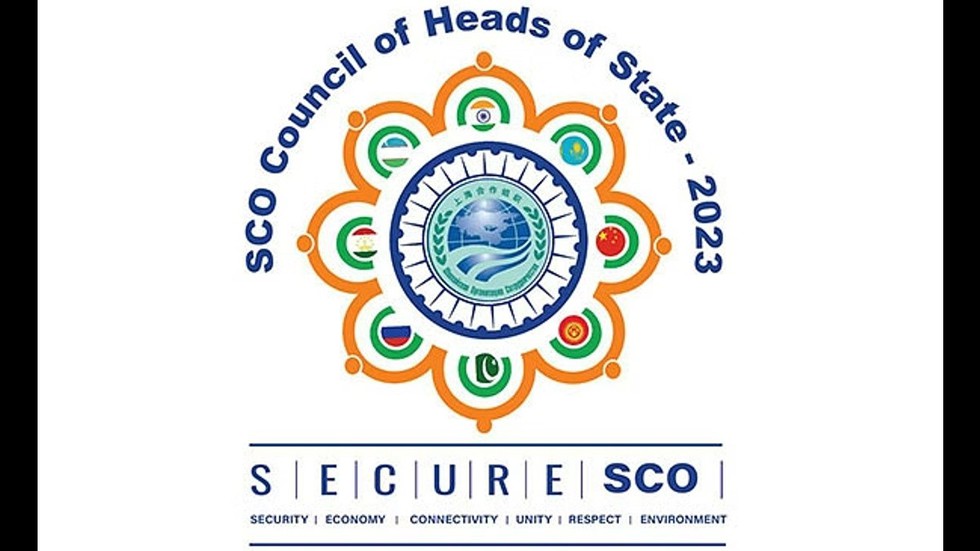
About SCO Summit, 2023:
- It will be held in the virtual format.
- All the SCO Member States, China, Russia, Kazakhstan, Kyrgyzstan, Pakistan, Tajikistan and Uzbekistan have been invited to attend the Summit.
- Iran, Belarus and Mongolia have been invited as Observer States.
- The theme of the Summit is ‘Towards a SECURE SCO’. The SECURE acronym stands for Security, Economy and Trade, Connectivity, Unity, Respect for Sovereignty and Territorial Integrity and Environment.
- India has set up new pillars of cooperation under its Chairmanship - Startups and Innovation, Traditional Medicine, Digital Inclusion, Youth Empowerment and Shared Buddhist Heritage.
About Shanghai Cooperation Organisation:
- The SCO was founded at a summit in Shanghai in 2001 by the presidents of Russia, China, the Kyrgyz Republic, Kazakhstan, Tajikistan and Uzbekistan.
- India and Pakistan became its permanent members in 2017.
- The SCO is an influential economic and security bloc and has emerged as one of the largest transregional international organisations.
- SCO has two Permanent Bodies - (i) SCO Secretariat in Beijing (ii) Executive Committee of the Regional Anti-Terrorist Structure (RATS) in Tashkent.
- The Regional Anti-Terrorist Structure serves to promote cooperation of member states against terrorism, separatism and extremism.
- The official working languages: Chinese and Russian.
Prelims Pointers
May 31, 2023
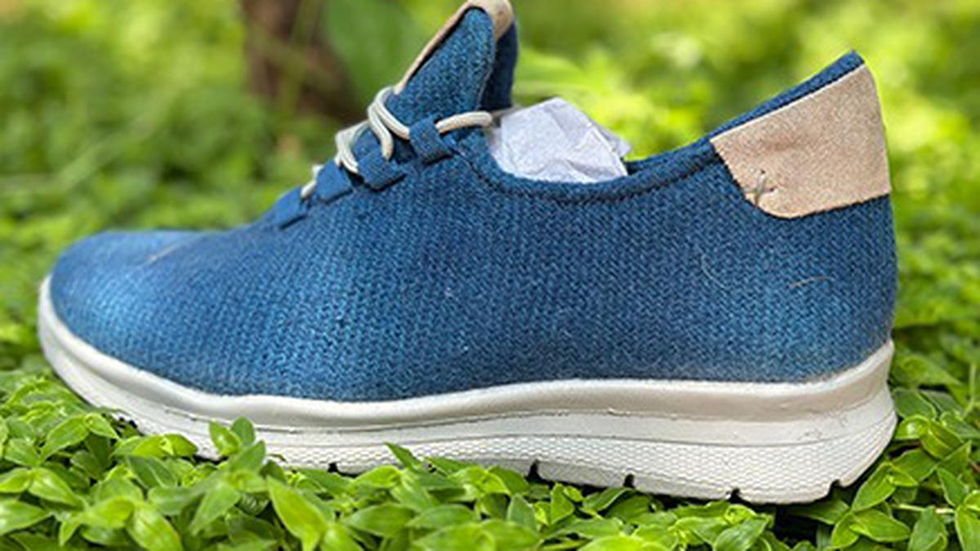
- What it is? Gongadi, (known also as Kambal) is the traditional woolen blanket woven by the indigenous Kuruma pastoralist communities from wool of the indigenous Deccani sheep (known locally as Nalla gorrae) breed found in the Deccan Plateau region including the Indian state of Telangana.
- The famous blanket has once served the Indian Armed Forces to beat harsh winters at the borders.
- Features:
- The unique gongadi is not only the symbol of rich diverse traditional weaving culture of the Deccan region but also the pride and identity of the local indigenous pastoralist communities.
- The coarse woolen blanket is famous for its durability and versatility.
- The tough gongadi usually lasts for more than a decade and acquires this unique quality from the craft of hand weaving.
- One of the unique natures of gongadi is that it does not fade but grows darker in time.
- The indigenous Kuruma weavers say that gongadi is so strong that you can lift a fully grown bull off the ground with it.
- The traditional gongadi is produced organically, without using any dyes either natural or synthetic. Sizing of the strings is done using the paste of soaked and cooked tamarind seeds
Prelims Pointers
May 31, 2023

About Tele-Law Programme:
- The Tele-Law programme comes under the Department of Justice, Ministry of Law and Justice and was launched in 2017.
- It is an e-interface mechanism to seek legal advice and consultation at a pre-litigation stage with the aim of ‘Reaching the Unreached’.
- The programme connects needy and marginalised people in need of legal aid with the Panel Lawyers via video conferencing/telephonic facilities available at Common Service Centres (CSCs) situated at the panchayat level. In addition, the service can also be accessed through the Tele-Law Mobile App.
- A Panel Lawyer is a practicing advocate selected by the Department of Justice and CSC-eGovernance Services or registered on the Panel of State /District Legal Services Authority.
- Eligibility: Legal advice is made available to everyone under Tele-Law service. Advice is free of Cost to those who are eligible for free legal aid under Section 12 of LSA Act, 1987.
- Women
- Children
- Persons belonging to Scheduled Caste and Scheduled Tribe
- Victims of Trafficking
- Mentally ill and differently-abled people
- Victims of natural disaster/ethnic violence
- Workers in unorganized sector/industrial workers
- Undertrials
- People of low-income group
- For all others, a nominal fee of Rs. 30/- is charged for each consultation.
- Kind of cases/matters: Legal matters in which advice can be taken through Tele-Law service include:
- Dowry, family dispute, divorce, protection from domestic violence
- Sexual harassment, sexual abuse, eve teasing at the workplace
- Maintenance of women children and senior citizens
- Rights regarding property and land
- Equal wages for males and females
- Maternity benefits and prevention of foeticide.
- Atrocities against scheduled castes/ scheduled tribes and their rehabilitation.
Prelims Pointers
May 31, 2023
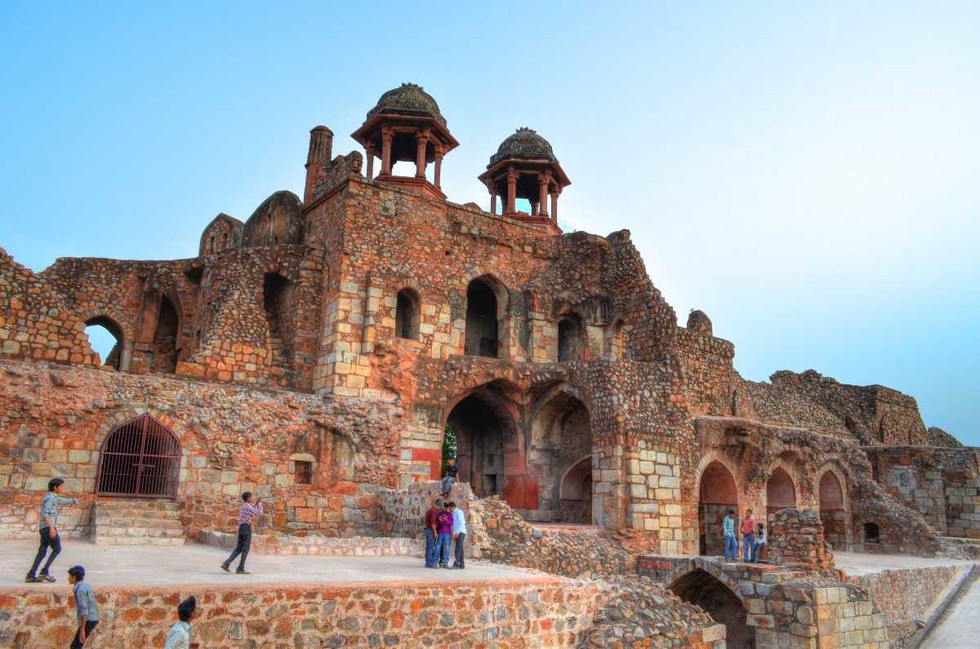
About Purana Qila:
- Location:
- It is located on the South Eastern part of the present city of New Delhi.
- It is one of the oldest forts in Delhi and built on the banks of river Yamuna.
- The present citadel at Purana Qila started its construction in the reign of Humayun and was completed by Sher Shah Suri (‘The Lion King’).
- The Qila was inspired by Jama Masjid, which was established 15 years before the reconstruction of Qila.
- Architecture:
- It is rectangular in shape and is spread over an area of 1.5 kilometers.
- Another amazing feature of the Purana Qila are the three gates that are a display of a happy blend of Hindu and Muslim styles of architecture. – Bara Darwaza or the Big Gate facing west, the Humayun Gate facing south, and the Talaqqi Gate, which is often referred to as the forbidden gate.
- All of the gates are double-storeyed and comprise of huge semi-circular bastions flanking either of their sides.
- These bastions are equal in frequency, except for in the westward wall, where they are built at a distance of 73 meters from each other.
- The eastern and western walls of the Qila are the tallest, which were specifically designed for safeguarding the Kings residing within the four-walls.
- All the walls surrounding the Qila are 0.33 meters thick and supported by bastions.
Prelims Pointers
May 31, 2023
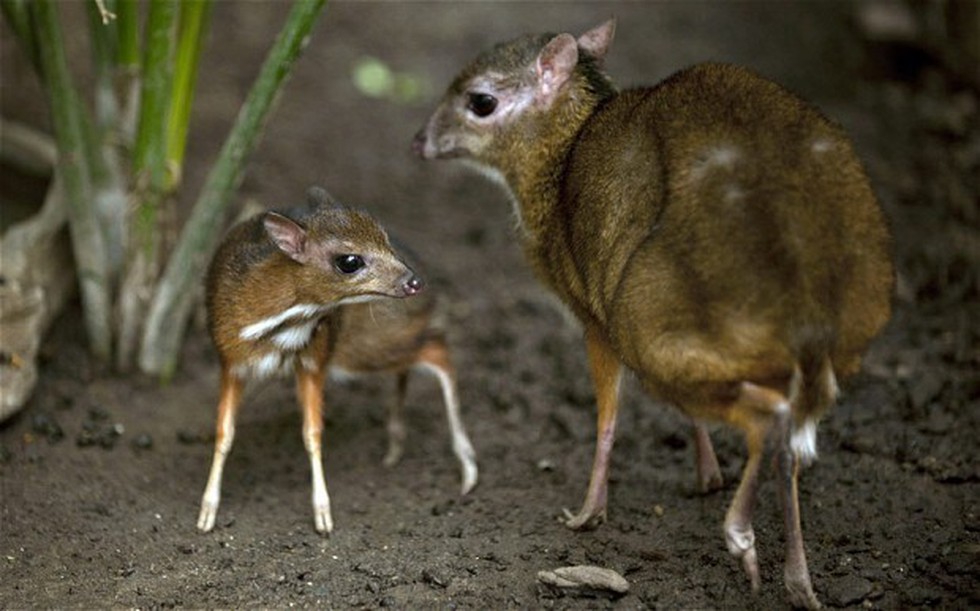
About Kanger Valley National Park:
- Location: It is located in Jagdalpur in Bastar district of Chhattisgarh state.
- The National Park derives its name from the Kanger River, which flows centrally from the Northwest to the Southeast direction.
- It got the status of a national park in the year 1982.
- Topography:It is noted for its highly heterogeneous land formations ranging from low flat and gentle areas to steep slopes, plateaus, valleys, and stream courses.
- It is home to three exceptional caves – famous for their amazing geological structures of Kutumbasar, Kailash and Dandak- Stellagmites and Stalactitees.
- National Park is known for the presence of underground limestone caves with dripstone and floston. The stalegmites and stalactite formation is still increasing.
- Tirathgarh Waterfall is located in Kanger Valley National Park.
- Vegetation: It is distinguished blend of mixed moist deciduous type of forests with the predominance of Sal, teak and bamboo.
- Fauna:
- Major wild animals include tigers, mouse deer, leopards, wildcat, sambar, chital, barking deer, langurs, jackals, rhesus macaque, flying squirrel etc.
- The areal fauna at the park consists of common hill myna, red jungle fowl, spotted owlet, racket-tailed drongos, parrots etc.
Key facts about rare Indian Mouse Deer or Spotted Chevrotain:
- It is the smallest deer in India and is highly nocturnal.
- Scientific Name: Moschiola indica
- Distribution:
- It is endemic to the Indian subcontinent.
- It is mainly found in peninsular India with some old records from Nepal.
- Sri Lanka has a separate species called spotted chevrotain (Moschiola meminna).
- Within India, it is commonly encountered in a number of forest areas along the Western Ghats, in the Eastern Ghats up to Orissa, and in the forests of central India.
- Features:
- It is small, 25-30 cm at shoulder height, and weighs from two to four kg.
- A unique feature of this group is that instead of four-chambered stomach like in other ruminants, they have a three-chambered stomach.
- It forages on forest floor for fruits, roots, leaves and herbs.
- It has occasionally been observed eating insects, crustaceans and even small mammals.
- Conservation Status:
- IUCN: Least Concern
Prelims Pointers
May 31, 2023
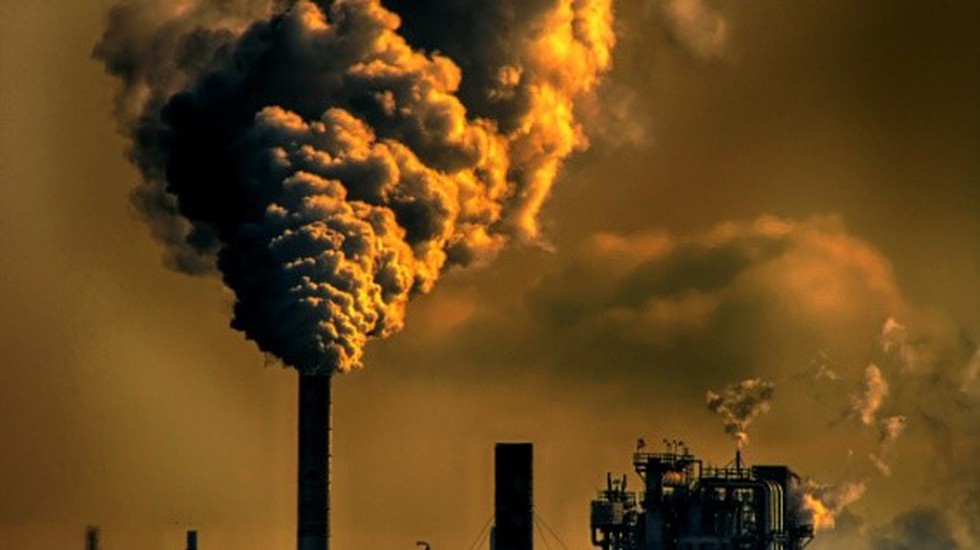
About Global Greenhouse Gas Watch (GGGW):
- It is a new greenhouse gas (GHG) monitoring initiative of the World Meteorological Organisation (WMO).
- GGGW will fill critical information gaps, providing an integrated, operational framework under all space-based and surface-based observing systems under one roof, along with modelling and data assimilation capabilities.
- It will build on WMO’s experience in coordinating international collaboration in predicting the weather and analysing climate on long-standing activities in greenhouse gas monitoring and research under the guidance of the Global Atmosphere Watch, established in 1989.
- GGGW predicts a top-down approach to the flux evaluation, which builds on existing capabilities in surface- and space-based observations and modelling, ensuring the timely exchange of all observations and data.
- The GGGW will consist of four main components:
- Comprehensive, sustained, global surface- and satellite-based observations of CO2, methane, and nitrous oxide concentrations, partial column amounts, total column amounts, vertical profiles, and fluxes supporting oceanic, meteorological, and terrestrial variables, internationally exchanged as rapidly as possible.
- Prior estimates of the GHG emissions based on the activity data and process-based models.
- Global high-resolution Earth system models representing GHG cycles.
- Data assimilation systems combining the observations with model calculations to generate products of higher accuracy.
Key facts about World Meteorological Organisation (WMO):
- It is a specialized agency of the United Nations (UN).
- It is the UN system's authoritative voice on the state and behavior of the Earth's atmosphere, its interaction with the oceans, the climate it produces, and the resulting distribution of water resources.
- It originated from the International Meteorological Organization (IMO), which was founded in 1873.
- Established in 1950, WMO became the specialized agency of the UN for meteorology(weather and climate), operational hydrology and related geophysical sciences.
- Headquarters: Geneva, Switzerland.
- Currently it has a membership of 187 countries.
- Governance Structure:
- Its supreme body is the World Meteorological Congress, which consists of representatives of all members. It meets at least every four years to set general policy and adopt regulations.
- A 36-member Executive Council meets annually and implements policy.
Prelims Pointers
May 31, 2023
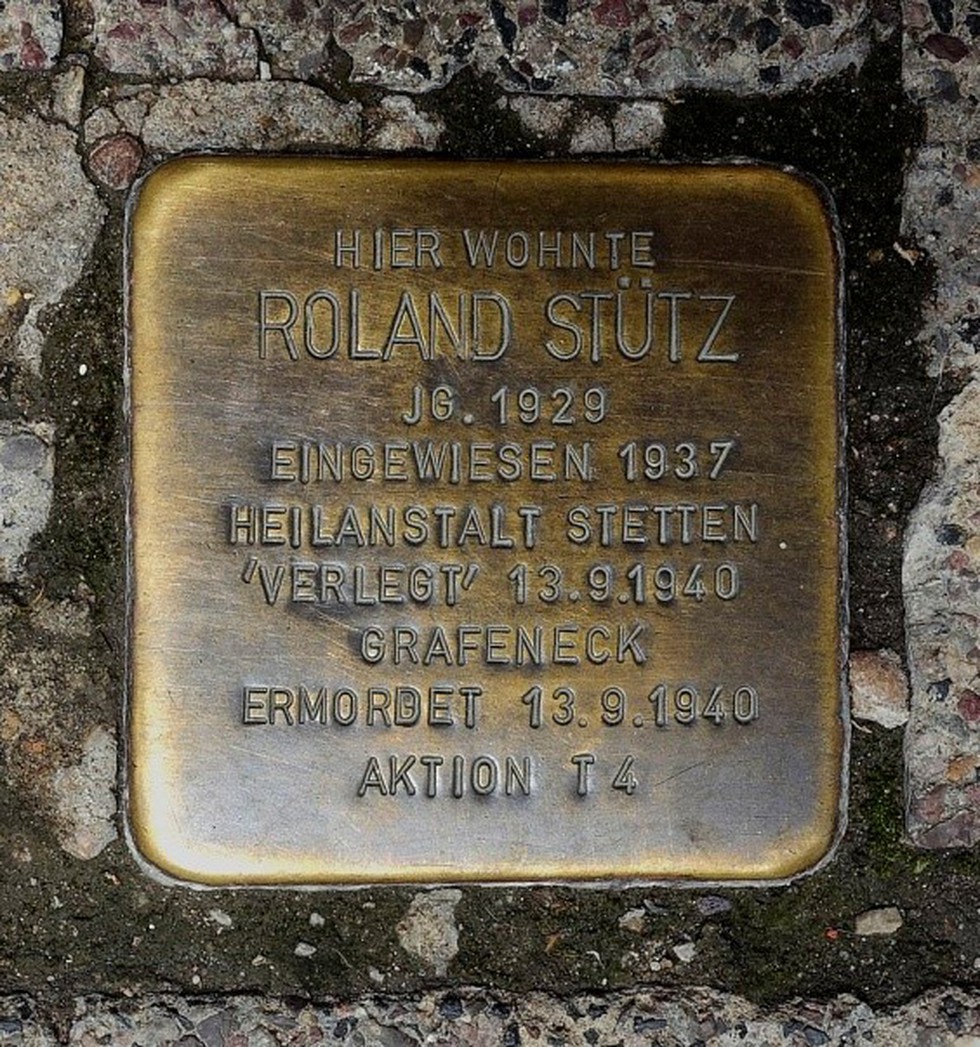
About Stolpersteine:
- Stolperstein are small, brass memorials placed in the pavements of cities across Europe to commemorate victims of Nazi persecution.
- The Stolpersteine are a project initiated by German artist Gunter Demnig since 1992.
- These small stones serve as a reminder of the atrocities committed during the Holocaust and the countless lives that were lost.
- "Stolperstein" is a German word meaning, literally, "stumbling stone," or, metaphorically, "stumbling block."
- The first Stolperstein was placed on 16 December 1992, a date which marked 50 years since an order was signed to begin the mass deportation of Jewish people and Roma from Germany.
- Each of the brass plaques embedded in pavements recalls the fate of a person who was persecuted by the Nazis, deported, murdered or driven to suicide.
- Unlike some other memorials that focus on specific persecuted groups, the Stolpersteine honour all victims of the Nazi regime, including Jewish, Sinti, Roma, disabled, dissident, and Afro-German and “asocial” citizens.
- The inscription on each stone begins “Here lived”, followed by the victim’s name, date of birth, and fate: internment, suicide, exile or, in the vast majority of cases, deportation and murder.
- Each Stolperstein is individually funded and can be sponsored by private individuals, schools or and organisations.
- It is the largest decentralized Holocaust memorial in the world.
Prelims Pointers
May 31, 2023
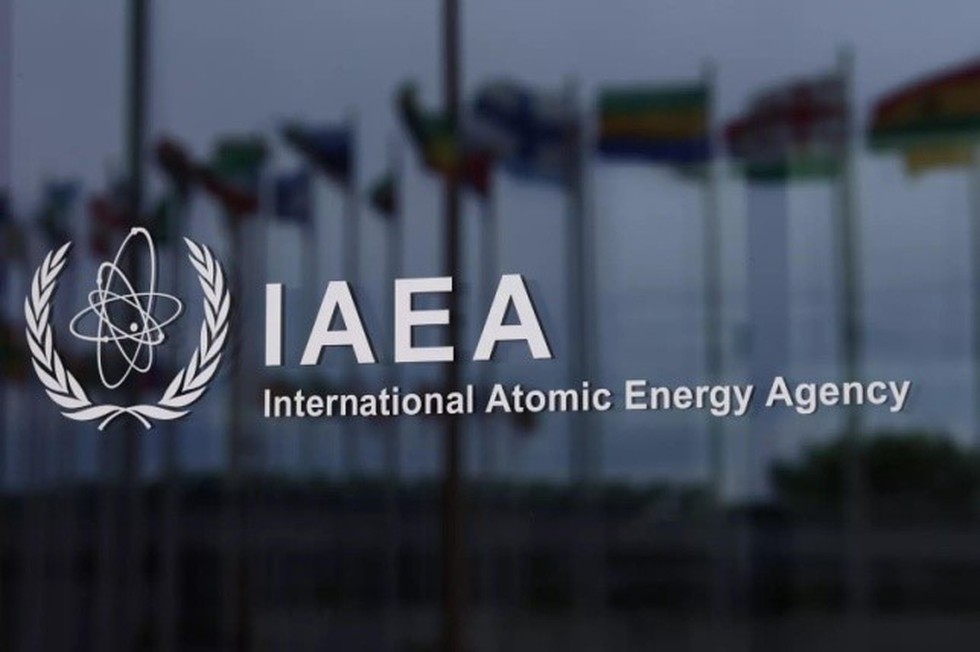
About International Atomic Energy Agency (IAEA):
- It is widely known as the world's "Atoms for Peace and Development" organization within the United Nations family.
- Mandate: It is the world's central intergovernmental forum for scientific and technical co-operation in the nuclear field. It works for the safe, secure and peaceful uses of nuclear science and technology.
- History: Though established as an autonomous organisation, independently of the United Nations through its own international treaty, the IAEA Statute, the IAEA reports to both the United Nations General Assembly and Security Council.
- Headquarters: Vienna, Austria.
- Functions:
- The Agency works with its Member States and multiple partners worldwide to promote the safe, secure and peaceful use of nuclear technologies.
- It applies nuclear safeguards – consisting of monitoring, inspection, information analysis, and other activities – to verify that nuclear activities remain peaceful and detect and deter their diversion, including to weapons-related purposes.
- In particular, the IAEA implements comprehensive safeguards agreements mandated by the Nuclear Non-Proliferation Treaty (NPT), which serve as a first line of defense against nuclear weapons proliferation.
- IAEA assists its Member States and promotes the exchange of scientific and technical information between them.
- IAEA enhances national, regional, and international capacities to respond to nuclear and radiological incidents, which is essential to minimizing their impact.
What is the Nuclear Non-Proliferation Treaty (NPT)?
- It was an agreement signed in 1968 by several of the major nuclear and non-nuclear powers that pledged their cooperation in stemming the spread of nuclear technology.
- With 191 States parties, it is the most widely adhered to treaty in the field of nuclear non-proliferation, peaceful uses of nuclear energy and nuclear disarmament.
- Under the NPT, non-nuclear-weapon States parties have committed themselves not to manufacture or otherwise acquire nuclear weapons or other nuclear explosive devices while nuclear-weapon States parties have committed not to in any way assist, encourage or induce any non-nuclear-weapon State party to manufacture or otherwise acquire nuclear weapons or other nuclear explosive devices.
- Nuclear-weapon States parties under the Treaty are defined as those that manufactured and exploded a nuclear weapon or other nuclear explosive device before 1 January 1967.
- There are five nuclear-weapon States parties to the Treaty.
- Only Israel, India, and Pakistan have never been signatories of the Treaty, and North Korea withdrew from the Treaty in 2003.
Prelims Pointers
May 31, 2023
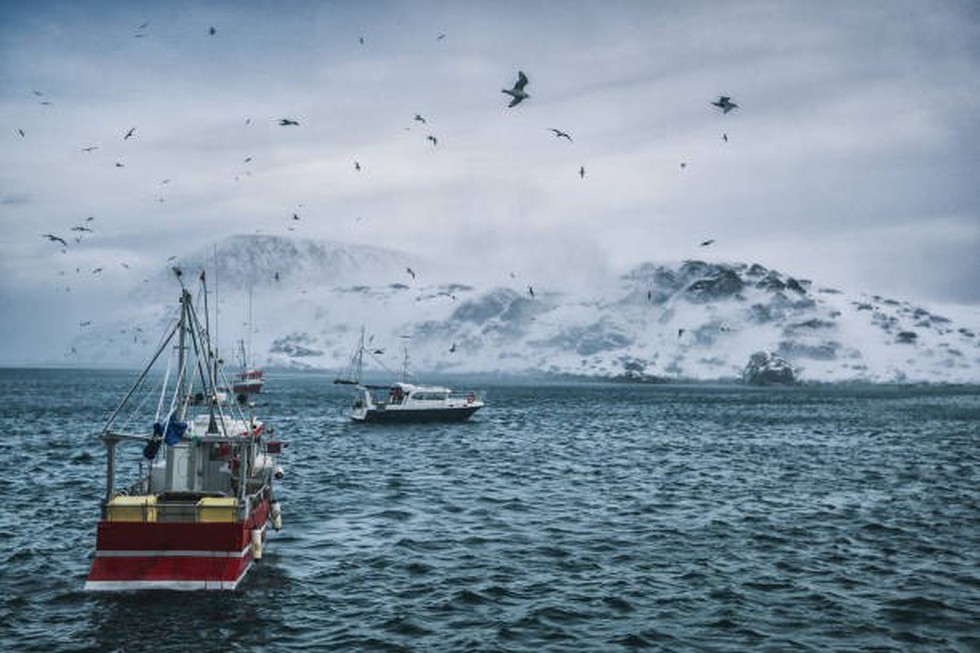
About Barents Sea:
- Location:
- It is a marginal sea of the Arctic Ocean.
- It is located along the northern coasts of Norway and Russia and divided between Norwegian and Russian territorial waters.
- The sea was known to Vikings and medieval Russians as the Murmean Sea.
- The current name of the sea is after the historical Dutch navigator Willem Barentsz.
- Boundaries:
- It is bounded by the Svalbard archipelago in the northwest, Franz Josef Land islands in the northeast, the Novaya Zemlya archipelago in the east, the Norwegian Seaand the Greenland Sea in the west, and by the Kola Peninsula in the south.
- It is separated from the Kara Sea by the Kara Strait and the Novaya Zemlya archipelago.
- The White Sea and the Pechora Sea are two parts of the Barents Sea.
- The White Sea is a southern arm of the Barents Sea, which separates the Kola Peninsula from the Russian mainland.
- The Pechora Sea is situated in the southeastern part of the Barents Sea.
- Features:
- It is a shallow sea, with an average depth of 230 metres.
- The sea’s deepest point is 600 m at the Bear Island Trench.
- The Barents Sea faces a subarctic climate.
- The waters of the Barents Sea have a high salinity of 34 parts per 1,000.
- Due to the North Atlantic drift, the Barents Sea has a high biological production compared to other oceans of similar latitude.
- Its topography is characterized by troughs and basins, separated by shallow bank areas.
Prelims Pointers
May 31, 2023
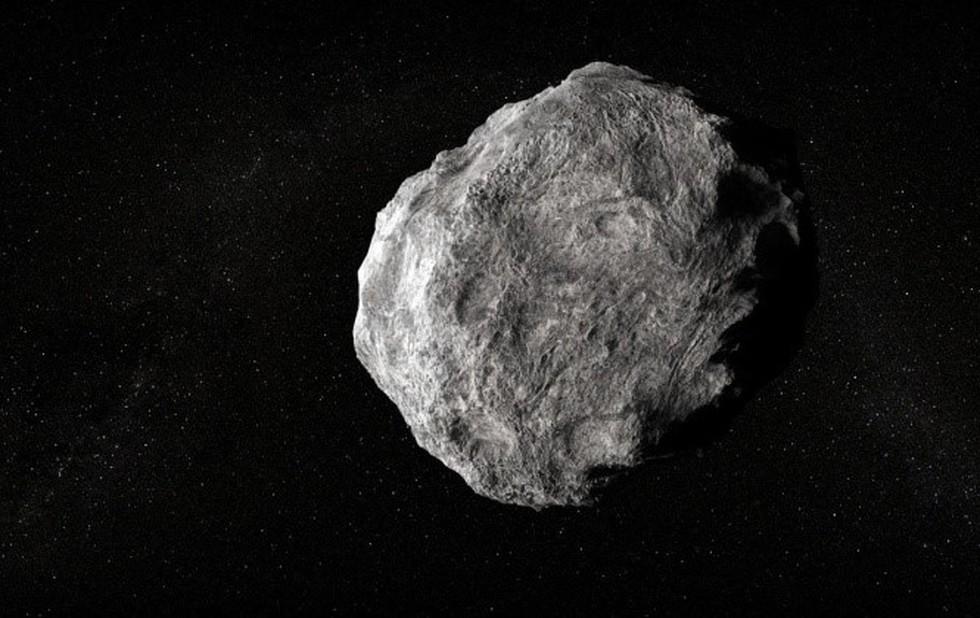
About 2023 FW13:
- It is an asteroid which has been designated as a quasi-satellite or a quasi-moon.
- It is among the few known quasi-moons or satellites that we know of in our solar system.
- It was identified by experts utilizing the Pan-STARRS telescope situated atop Hawaii’s Haleakala volcano.
- It has been in Earth's vicinity since 100 BC and will keep circling our planet for at least another 1,500 years, until AD 3700.
- Features:
- The newfound asteroid 2023 FW13 circles the sun in sync with Earth.
- According to preliminary estimates, its diameter is from 10 to 20 meters.
- While not gravitationally bound to Earth in any discernible way (like our Moon), the asteroid's bizarre orbit makes it circle our planet occasionally, earning it the name of a quasi-satellite or quasi-moon.
- At the closest point in its slightly elliptical orbit around Earth, the moon comes within about 223,693 miles (360,000 km) of our planet.
What are quasi-moons?
- Quasi-moons are also known as 'quasi-satellites' because they appear to orbit our planet in the same way that our natural satellite, the Moon.
- It is a space rock that circles the Earth, but is gravitationally bound by the sun.
May 30, 2023
Prelims Pointers
May 30, 2023
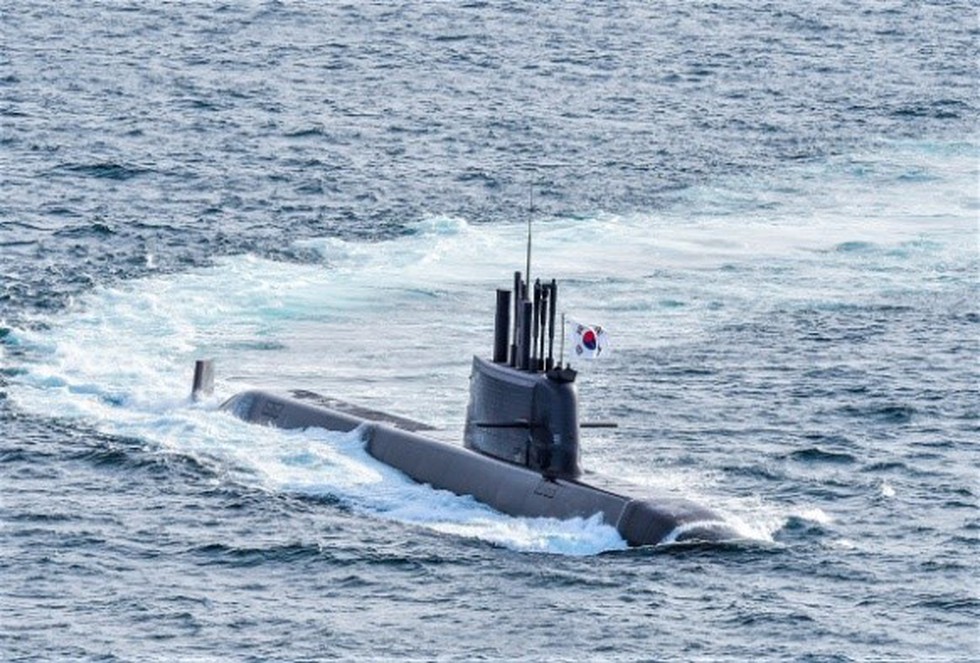
About KSS-III Batch-II Submarine:
- The KSS-III, the largest submarine to ever be built by South Korea, is being developed in two phases, Batch-I and Batch-II.
- It is a series of diesel-electric attack submarines.
- KSS-III Batch-II is an advanced version of its predecessor in terms of combat management systems, firepower, and sonar capabilities.
- It is jointly developed by Daewoo Shipbuilding and Marine Engineering (DSME) and Hyundai Heavy Industries (HHI).
- Features:
- The submarine will be 89 metres long, 9.6 metres wide, and have a displacement of around 3,600 tonnes.
- The Batch-II series will be equipped with lithium-ion batteries, which will reportedly make it capable of cruising at higher speeds with a greater period of underwater endurance, life expectancy, and durability.
- Additionally, the submarines will be equipped with Air Independent Propulsion (AIP) technology that will allow them to operate without access to atmospheric oxygen.
- It will also be capable of carrying a crew of 50 members.
- It can fire missiles such as Hyunmoo-4-4 submarine-launched ballistic missiles (SLBM).
- The submarines can attain a maximum operating speed of approximately 20 knots and cruising range of 10,000 nmi.
- The navigation aids on board the submarine include an inertial navigation system (INS) and global positioning system (GPS).
Prelims Pointers
May 30, 2023
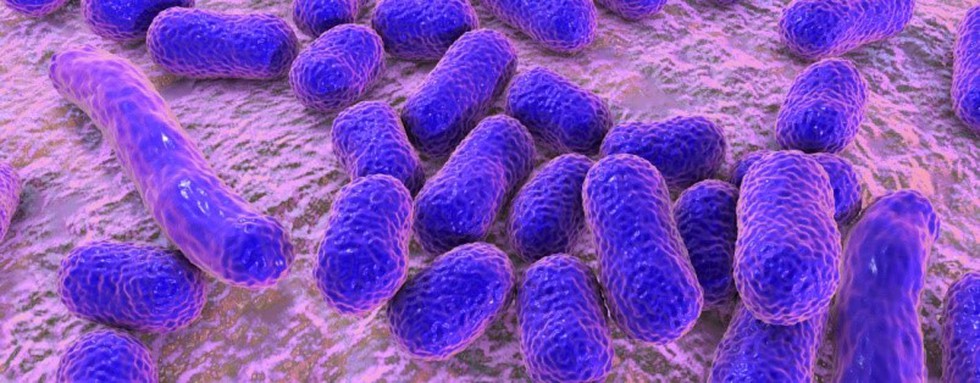
About Acinetobactor baumannii:
- Acinetobacter is a group of bacteria (germs) commonly found in the environment, like in soil and water.
- While there are many types, the most common cause of infections is Acinetobacter baumannii, which accounts for most Acinetobacter infections in humans.
- It is a Gram-negative bacteria that often displays multidrug resistance.
- It can cause infections in the blood, urinary tract, and lungs (pneumonia), or in wounds in other parts of the body.
- It can also “colonize” or live in a patient without causing infections or symptoms, especially in respiratory secretions (sputum) or open wounds.
- These germs are frequent causes of hospital-acquired infections, especially in intensive care units (ICUs).
- It is highly contagious.
Gram-Positive vs. Gram-Negative Bacteria:
- Gram-positive bacteria have cell walls made of a thick layer of peptidoglycan.
- The cell walls of gram-negative bacteria contain only a thin layer of peptidoglycan, but they also have an outer membrane that is absent in gram-positive bacteria.
- Gram staining is a technique that uses violet dye to distinguish between gram-positive and gram-negative bacteria.
- If the bacteria are gram-positive, the thick, peptidoglycan layer in their cell walls will retain the dye and they will stain violet.
- If the bacteria are gram-negative, the dye will leak out of the thin peptidoglycan layer, and the bacteria will stain red.
Prelims Pointers
May 30, 2023

About Spear Phishing:
- It is an email or electronic communications scam targeted towards a specific individual, organization or business.
- It is a targeted attempt to steal sensitive information such as account credentials or financial information from a specific victim, often for malicious reasons.
- This is achieved by acquiring personal details on the victim such as their friends, hometown, employer, locations they frequent, and what they have recently bought online.
- Working:
- A spear phishing email uses social engineering techniques to urge the victim to click on a malicious link or attachment.
- Additionally, the email will blatantly ask the recipient to respond urgently, such as transferring a specific sum of money or sending personal data such as a banking password.
- Because the emails are written in a highly familiar tone and refer to personal information about the recipient, victims mistakenly believe they know and trust the sender and respond to the request.
- Once the victim completes the intended action, the attacker can steal the credentials of a targeted legitimate user and enter a network undetected.
- This is the most successful form of acquiring confidential information on the internet, accounting for 91% of attacks.
Prelims Pointers
May 30, 2023
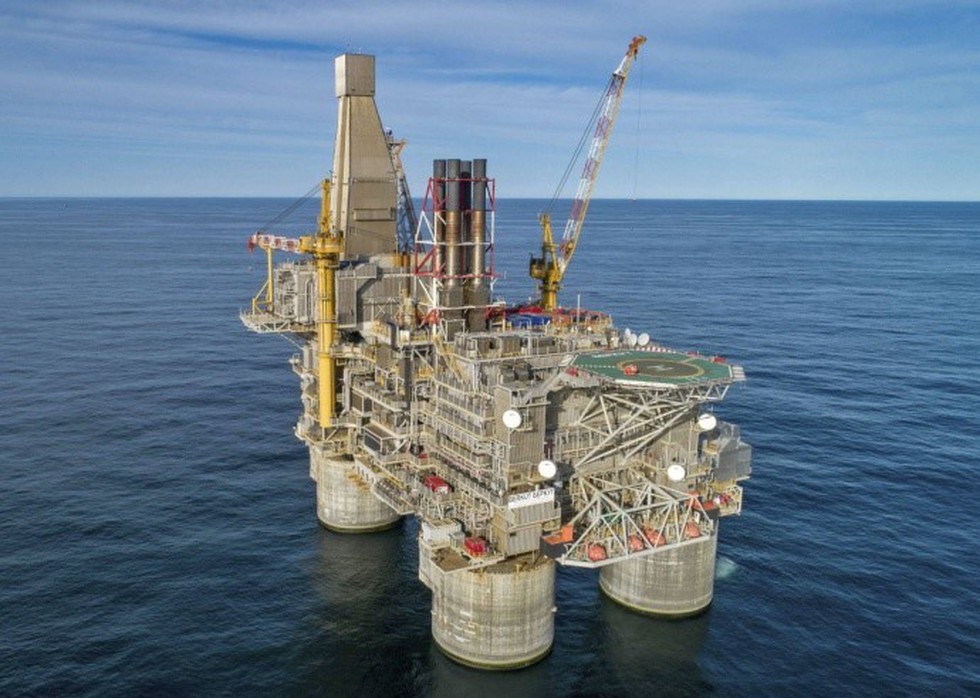
About Sakhalin-1 Project:
- Location: The Sakhalin-1 oil and gas development project is located in the Okhotsk Sea, off the north-eastern coast of Sakhalin Island in the Russian Far East.
- It comprises three offshore fields namely Chayvo, Odoptu, and Arkutun-Dagi.
- It is operated by Exxon Neftegas (ENL), a subsidiary of Exxon Mobil which holds a 30% participating interest. The other partners of the project are the Japanese consortium Sakhalin Oil and Gas Development Company (SODECO, 30%), India’s state-owned ONGC Videsh (20%), and Russian oil company Rosneft (20%).
- The Sakhalin 1 project is estimated to hold approximately 2.3 billion barrels of oil and 17.1 trillion cubic feet (Tcf) in recoverable reserves.
ONGC Videsh Ltd (OVL):
- It is a Miniratna Schedule “A” Central Public Sector Enterprise (CPSE)of the Government of India and is the wholly owned subsidiary and overseas arm of Oil and Natural Gas Corporation Limited (ONGC).
- It comes under the administrative control of the Ministry of Petroleum and Natural Gas.
- The primary business of ONGC Videsh is to prospect for oil and gas acreages outside India, including exploration, development and production of oil and gas.
- ONGC Videsh is the second largest petroleum company of India, next only to its parent ONGC.
Prelims Pointers
May 30, 2023
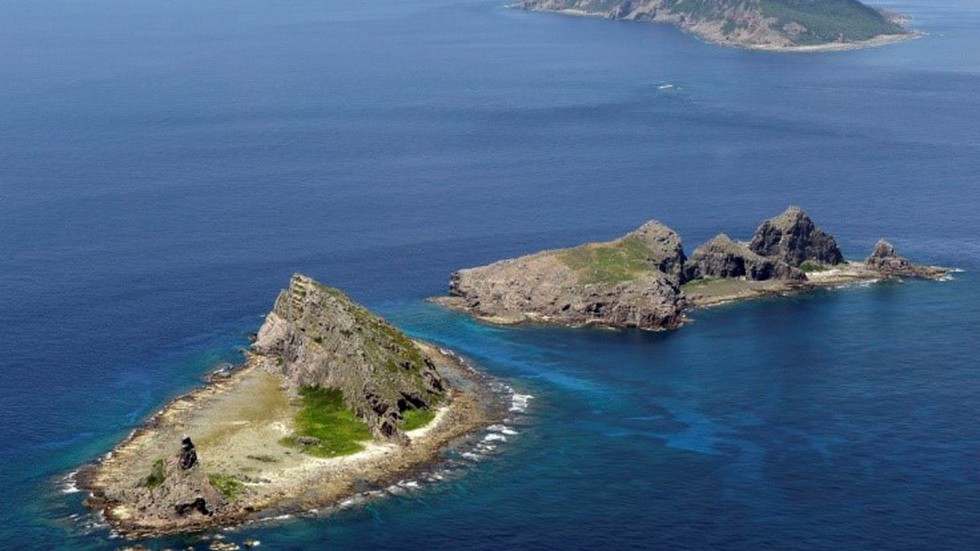
About Senkaku Islands:
- Location:
- The Senkaku Islands are an uninhabited group of islands situated in the East China Sea.
- It is approximately 90 nautical miles north from the Yaeyama Islands in Japan's Okinawa Prefecture and 120 nautical miles northeast of the island of Taiwan.
- They are also known as the Diaoyu Islands in Mainland China, the Diaoyutai Islands in Taiwan and the Pinnacle Islands by other observers.
- The islands comprise Uotsuri Island, Kuba Island, Taisho Island (also called Kumeakashima Island), Kitakojima Island, Minamikojima Island, Tobise Island, Okinokitaiwa Island, and Okinominamiiwa Island.
- Dispute: The islands are the focus of a territorial dispute between Japan and China and between Japan and Taiwan.
- Administration:
- They were never administered by any other country before Japan incorporated them into its territory in 1895.
- Currently, Japan administers and controls the Senkaku islands as part of the city of Ishigaki in Okinawa Prefecture.
Prelims Pointers
May 30, 2023
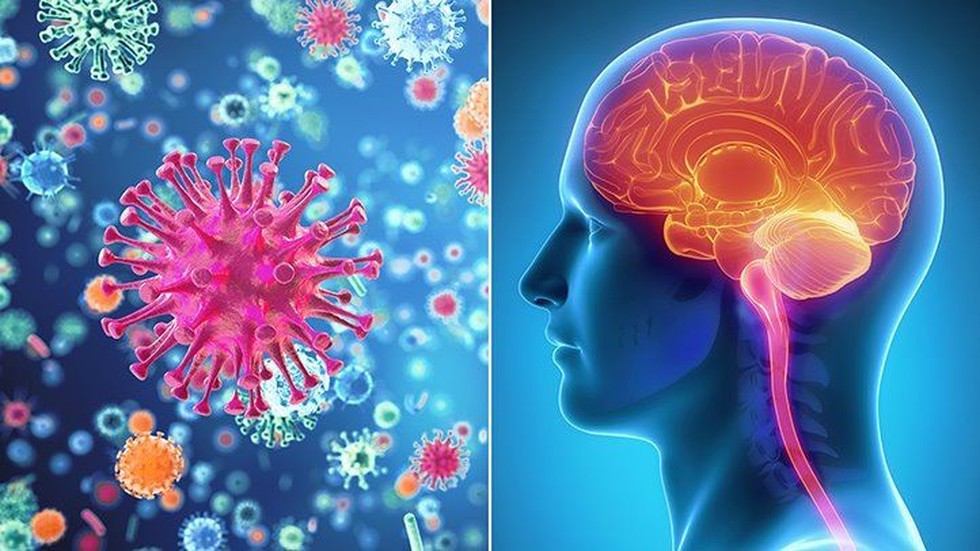
About Meningitis:
- Meningitis is an inflammation (swelling) of the protective membranes covering the brain and spinal cord. These membranes are called meninges.
- The most common causes of meningitis are viral and bacterial infections. Other causes may include:
- cancer
- fungi
- drug-induced reactions
- Transmission: Infections that cause meningitis can be spread through sneezing and coughing.
- Symptoms:
- Common symptoms of meningitis are neck stiffness, fever, confusion or altered mental status, headaches, nausea and vomiting.
- Less frequent symptoms are seizures, coma and neurological deficits (for example hearing or vision loss, cognitive impairment, or weakness of the limbs).
- Types of meningitis caused by viruses or bacteria can have similar symptoms. Symptoms may be stronger in some types of meningitis than in others and require different treatment.
- Treatment and Prevention:
- Meningitis is a medical emergency. It is potentially fatal within 24 hours and requires urgent medical attention.
- Meningitis can vary in severity, appropriate treatment and care depending on the cause. Meningitis caused by bacteria requires immediate antibiotic treatment.
- Vaccines offer the best protection against common types of bacterial meningitis.
- Antibiotics for close contacts of those with meningococcal disease, when given promptly, decreases the risk of transmission.
Prelims Pointers
May 30, 2023
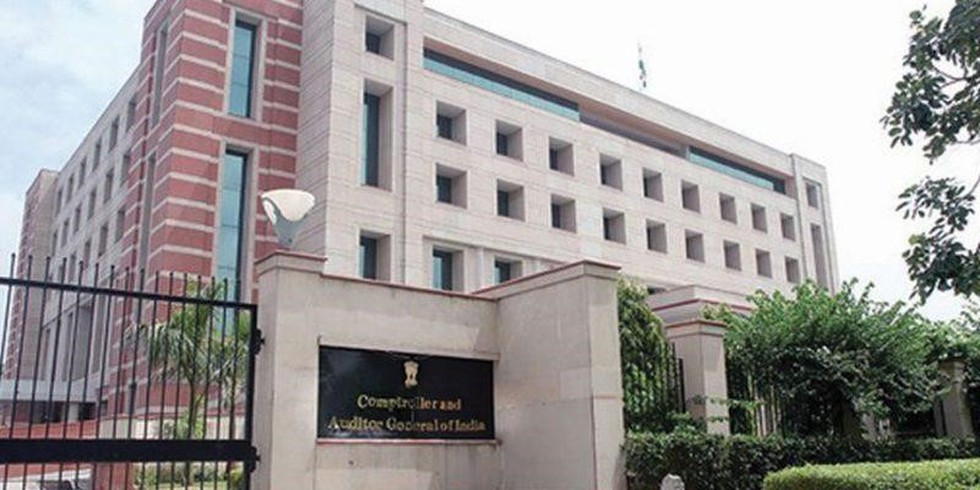
About Comptroller and Auditor General of India (CAG):
- CAG is the apex authority responsible for external and internal audits of the expenses of the National and state governments in the country.
- The Constitution of India provides for an independent office of the CAG in Chapter V.
- The CAG is mentioned in the Constitution of India under Article 148 – 151.
- Constitutional Provisions:
- Article 148broadly deals with the CAG appointment, oath and conditions of service.
- Article 149deals with duties and powers of the CAG.
- Article 150says that the accounts of the Union and of the States shall be kept in such form as the President may, on the advice of the CAG, prescribe.
- Article 151says that the reports of the CAG relating to the accounts of the Union shall be submitted to the President, who shall cause them to be laid before each House of Parliament.
- As per Article 279, Calculation of "net proceeds" is ascertained and certified by the CAG, whose certificate is final.
- Appointment and Terms of Service:
- As per Article 148 of the Constitution, there shall be a Comptroller and Auditor-General of India who shall be appointed by the President and can be removed from office only in the manner and on the grounds that a Judge of the Supreme Court is removed.
- He holds office for a period of six years or upto the age of 65 years, whichever is earlier.
- Functions of CAG:
- CAG audits the accounts related to all expenditure from the Consolidated Fund of India, Consolidated Fund of each state and UT’s having a legislative assembly.
- He audits all expenditure from the Contingency Fund of India and the Public Account of India as well as the Contingency Fund and Public Account of each state.
- He audits all trading, manufacturing, profit and loss accounts, balance sheets and other subsidiary accounts kept by any department of the Central Government and the state governments.
- CAG audits the receipts and expenditure of all bodies and authorities substantially financed from the Central or State revenues; government companies; other corporations and bodies, when so required by related laws.
- He audits the accounts of any other authority when requested by the President or Governor e.g. Local bodies.
- He advises the President with regard to prescription of the form in which the accounts of the Centre and States shall be kept.
- Reports by CAG: The CAG submits his audit reports relating to the accounts of the Centre to the President, who shall, in turn, place them before both the houses of Parliament. He submits 3 audit reports to the President-
- Audit report on appropriation accounts;
- Audit report on finance accounts;
- Audit report on public undertakings;
- He also submits his audit reports relating to the accounts of a State to the Governor, who shall, in turn, place them before the state legislature.
Prelims Pointers
May 30, 2023
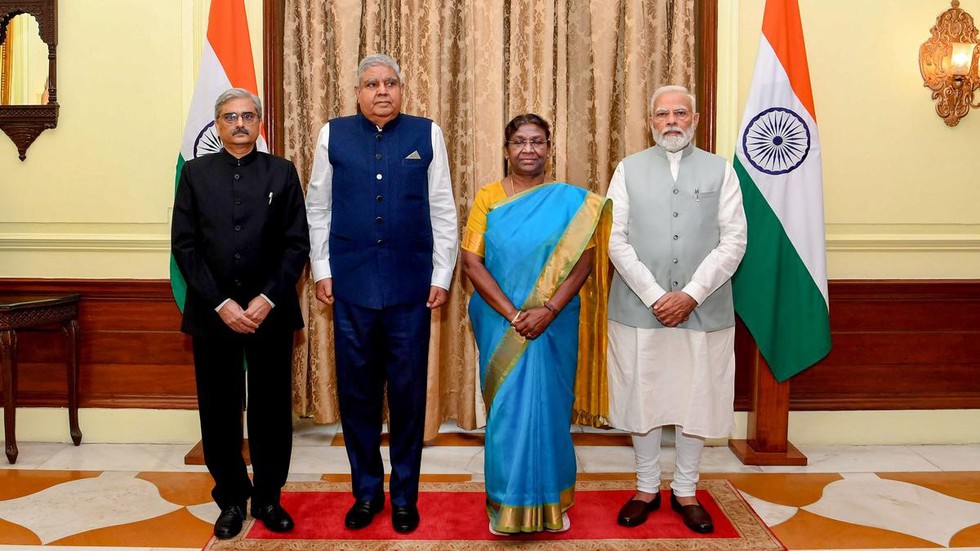
About Central Vigilance Commission:
- Background:
- The Central Vigilance Commission was initially set up through Resolution in 1964 of Government of India, on the recommendations of Committee on Prevention of Corruption formed under the Chairmanship of Shri K. Santhanam.
- In 1997, The Supreme Court gave directions to Government of India to confer statutory status upon the Central Vigilance Commission.
- Then Centre government given statutory status to Central Vigilance Commission in 2003.
- Vision:
- To eliminate corrupt and unethical practices in public administration and to bring about transparency, fair-play, objectivity, accountability and responsiveness to the aspirations of the citizen from administration.
- Composition: Central Vigilance Commission consists of a Central Vigilance Commissioner as Chairperson and not more than two Vigilance Commissioners as Members.
- Organization Structure:
- The Central Vigilance Commission has its own Secretariat, Chief Technical Examiners' Wing (CTE) and a wing of Commissioners for Departmental Inquiries (CDI).
- Chief Technical Examiners' Wing (CTE) - Technical audit of construction works of Governmental organisations from a vigilance angle and Investigation of specific cases of complaints relating to construction works.
- Commissioners for Departmental Inquiries (CDIs) - The CDIs function as inquiry Officer to conduct oral inquries in departmental proceeding itiated against public servants.
- Removal: The Central Vigilance Commissioner or any Vigilance Commissioner shall be removed from his office only by order of the President on the ground of proved misbehavior or incapacity after the Supreme Court, on a reference made to it by the President, has, on inquiry, reported that the Central Vigilance Commissioner or any Vigilance Commissioner ought on such ground be removed.
Prelims Pointers
May 30, 2023
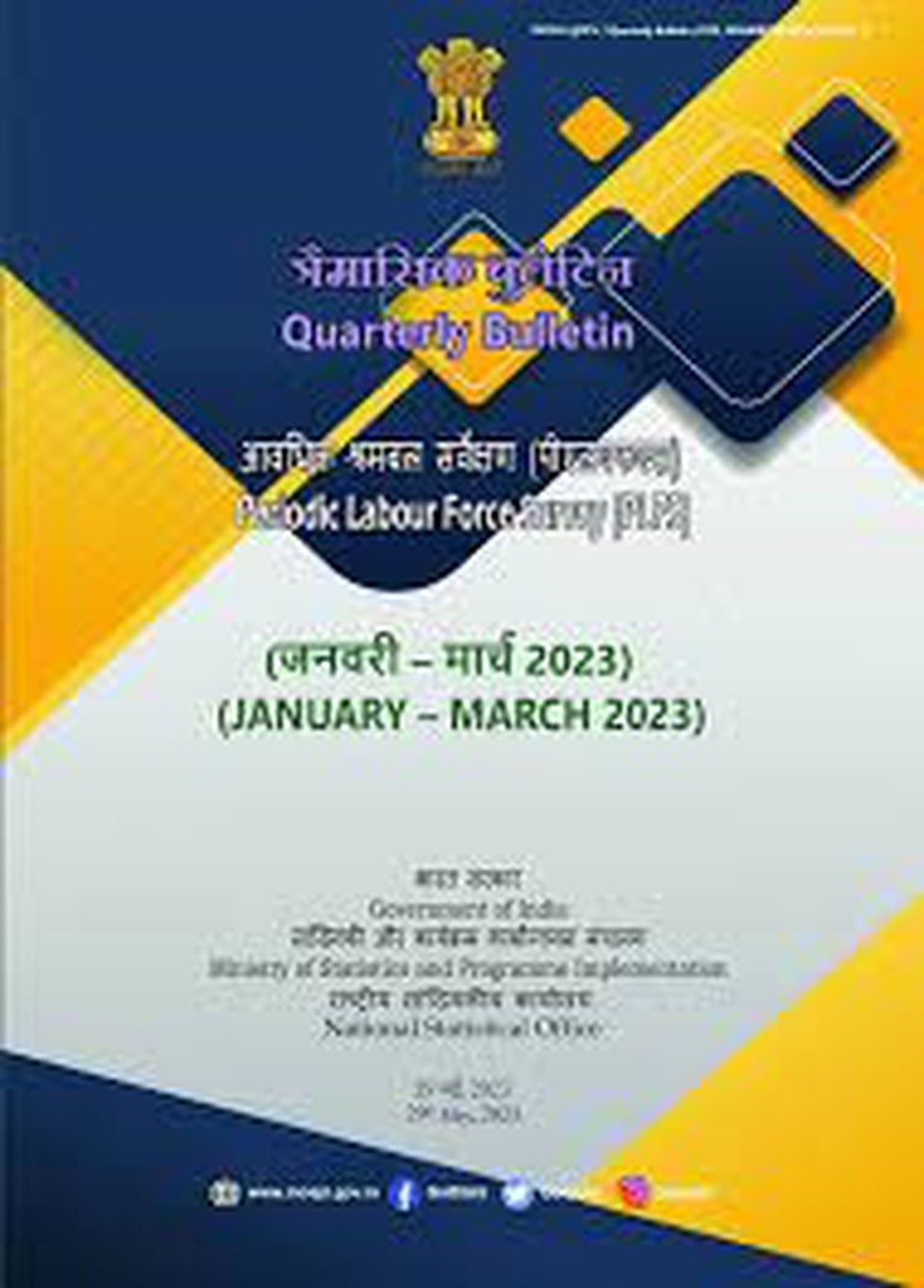
Key Points:
- The unemployment rate in current weekly status (CWS) for persons of age 15 years and above in urban areas declined to 6.8% in the January to March 2023 quarter.
- The urban labour force participation rate (LFPR) for all ages, however, inched up to a high of 38.1% in the fourth quarter of last fiscal from 37.9% in the October to December 2022 period.
- The urban LFPR for persons above 15 years of age was even higher at 48.5% in the fourth quarter of FY23.
About Periodic Labour force Survey:
- Considering the importance of availability of labour force data at more frequent time intervals, National Statistical Office (NSO) launched Periodic Labour Force Survey in April 2017.
- The objective of PLFS is:
- To estimate the key employment and unemployment indicators (viz. Worker Population Ratio, Labour Force Participation Rate, Unemployment Rate) in the short time interval of three months for the urban areas only in the ‘Current Weekly Status’ (CWS).
- To estimate employment and unemployment indicators in both ‘Usual Status’ (ps+ss) and CWS in both rural and urban areas annually.
- These indicators are defined as follows:
- Labour Force Participation Rate (LFPR): LFPR is defined as the percentage of persons in labour force (i.e. working or seeking or available for work) in the population.
- Worker Population Ratio (WPR): WPR is defined as the percentage of employed persons in the population.
- Unemployment Rate (UR): UR is defined as the percentage of persons unemployed among the persons in the labour force.
- Current Weekly Status (CWS): The activity status determined on the basis of a reference period of last 7 days preceding the date of survey is known as the current weekly status (CWS) of the person.
- It is conducted by the National Sample Survey (NSO), working under Ministry of statistics and programme implementation (MoSPI).
Prelims Pointers
May 30, 2023
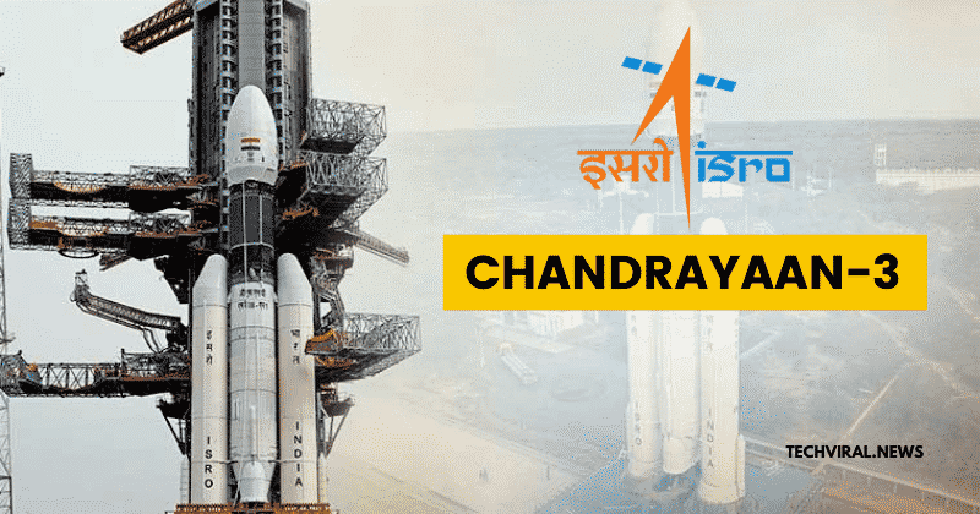
About Chandrayaan-3:
- Chandrayaan-3 is a follow-on mission to Chandrayaan-2 to demonstrate end-to-end capability in safe landing and roving on the moon.
- The propulsion module will carry the lander and rover configuration till 100 km lunar orbit.
- It would launched by LVM3 from Satish Dhawan Space Centre in Sriharikota.
- Mission Life (Lander & Rover) - One Lunar day (~ 14 earth day).
- ISRO’s ambitious Chandrayaan-3 mission is aimed at demonstrating critical technologies to land the spacecraft on the south pole of the moon.
- Chandrayaan-3 spacecraft is a composite of three modules -- propulsion, lander and rover.
- Chandrayaan-3 mission carries scientific instruments to study the thermo-physical properties of the lunar regolith, lunar seismicity, lunar surface plasma environment and elemental composition in the vicinity of the landing site.
- The lander being launched to the Moon with Chandrayaan-3 will have Chandra's Surface Thermophysical Experiment to measure the thermal conductivity and temperature, along with the Instrument for Lunar Seismic Activity that will estimate the seismicity around the landing site, and a Langmuir Probe to calculate the plasma density and its variations.
- The rover, will have the Alpha Particle X-ray Spectrometer and the Laser-Induced Breakdown Spectroscopy instrument for deriving the elemental composition in the vicinity of the landing site.
May 29, 2023
Prelims Pointers
May 29, 2023
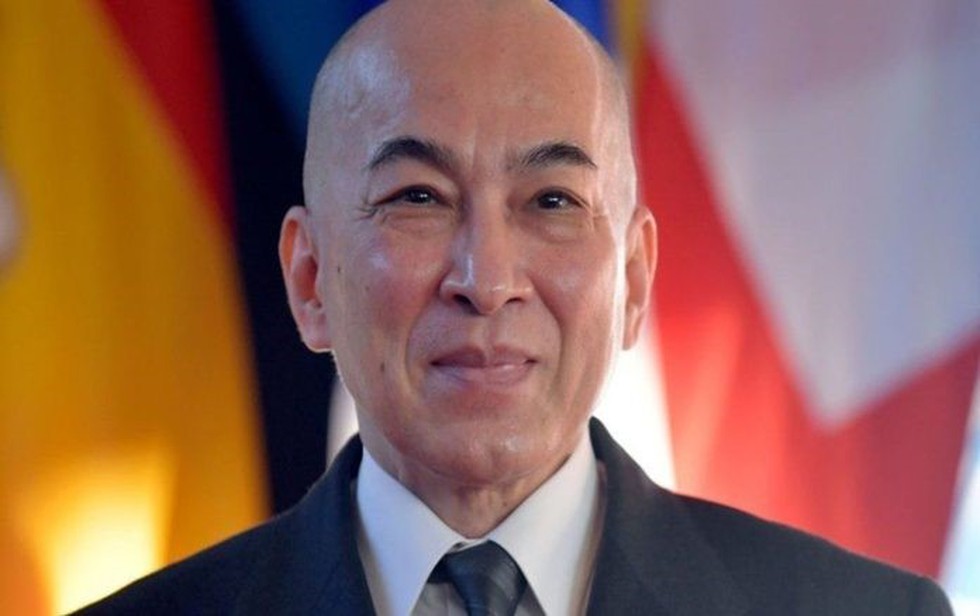
Why in News?
- The visit marks the culmination of the celebrations of the 70th anniversary of diplomatic relations between India and Cambodia.
- This visit by the King of Cambodia is taking place after almost six decades, with the last being that of the current King’s father in 1963.
About Cambodia:
- Cambodia, country on the Indochinese mainland of Southeast Asia.
- Its capital is Phnom Penh.
- It is bordered to the west and northwest by Thailand, to the northeast by Laos, to the east and southeast by Vietnam and to the southwest by the Gulf of Thailand.
- The two dominant hydrological features of Cambodia are the Mekong River and the Tonle Sap (Great Lake).
- Topography: The Elephant Mountains and Cardamom Mountain of the southwest and western regions; the Dangrek Mountains of the North adjoining of the Korat Plateau of Thailand and Rattanakiri Plateau and Chhlong highlands on the east merging with the Central Highlands of Viet Nam.
- Conservation and restoration of the ancient temples of Angkor Wat, Ta Prohm and Preah Vihar are being carried out under India’s funding.
Prelims Pointers
May 29, 2023
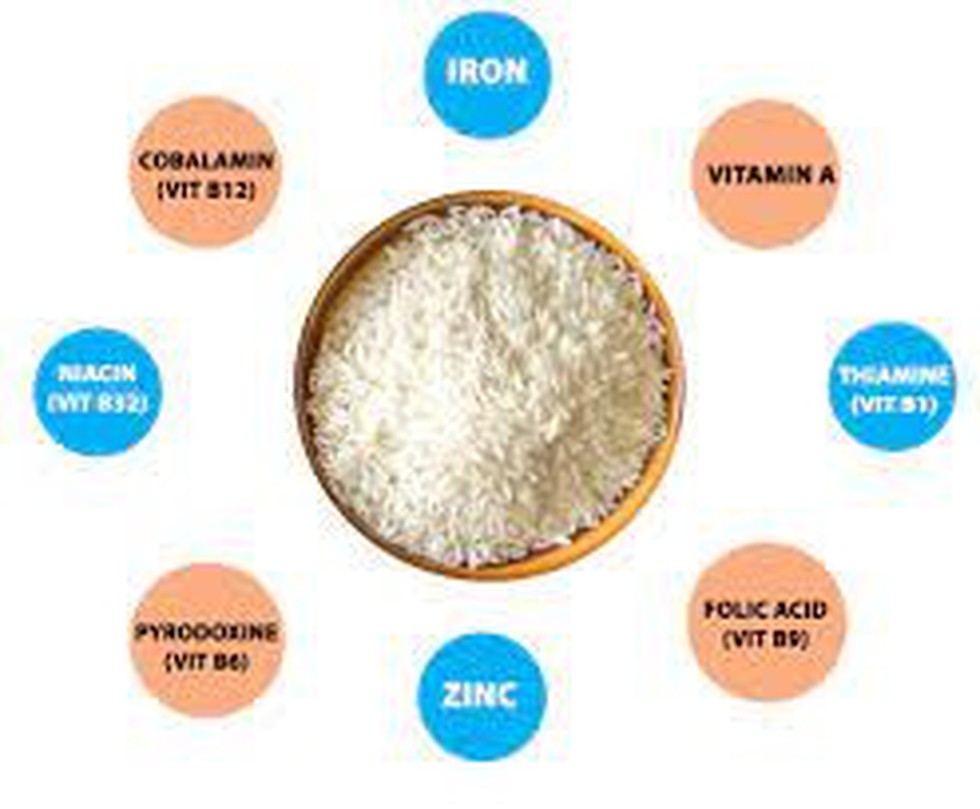
About Rice fortification:
- Fortification is the process of adding Fortified Rice Kernels (FRK), containing FSSAI prescribed micronutrients (Iron, Folic Acid, Vitamin B12) to normal Rice in the ratio of 1:100 (Mixing 1 Kg of FRK with 100 Kg custom milled rice).
- Fortified rice is nearly identical to traditional rice in aroma, taste, and texture. This process is done in the rice mills at the time of milling of rice.
- Fortification of rice is found to be a cost-effective and complementary strategy to increase vitamin and mineral content in diets with low turnaround time (TAT) and a step towards nutritional security.
Background:
- On 15 August 2021, when Prime Minister on India announced that over 80 crore people will be fed rice fortified with iron and vitamins to combat rising cases of anaemia and other micronutrient deficiency diseases.
About Anemia:
- Anemia is a problem of not having enough healthy red blood cells or hemoglobin to carry oxygen to the body's tissues.
- Symptoms: Possible symptoms of anemia include Tiredness, Weakness, Shortness of breath, Irregular heartbeat, Chest pain, Cold hands and feet etc.
- Causes of anemia: Different types of anemia have different causes. They include:
- Iron deficiency anemia, Vitamin deficiency anemia, Anemia of inflammation, Sickle cell anemia, Hemolytic anemias, Aplastic anemia.
- Prevention:
- Many types of anemia can't be prevented. But eating a healthy diet might prevent iron deficiency anemia and vitamin deficiency anemias. A healthy diet includes: Iron, Vitamin B-12, Vitamin C, Folate etc.
Prelims Pointers
May 29, 2023
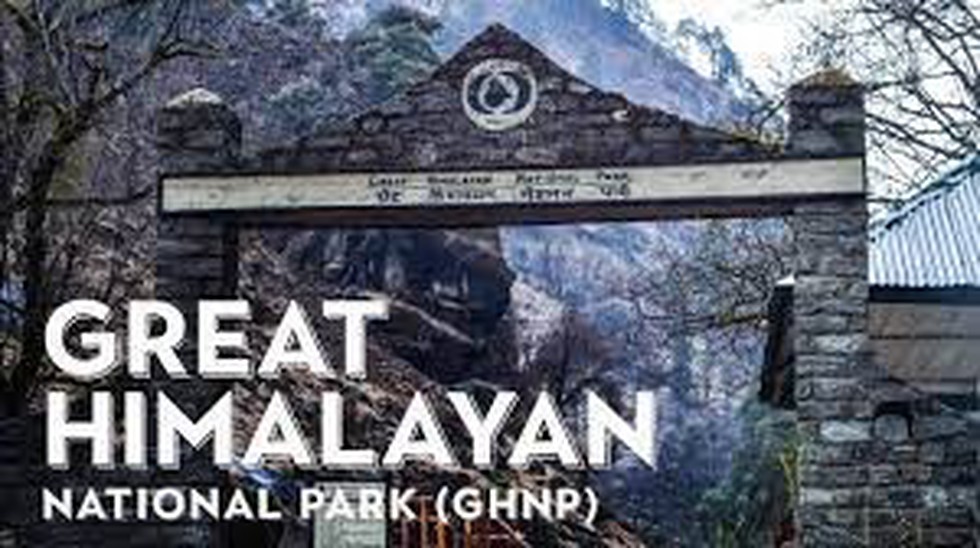
About Great Himalayan National Park:
- It is located in Banjaar Sub-Division of Kullu District of Himachal Pradesh in the far Western Himalayas.
- It spreads across a total area of 1171 sq km.
- It was constituted in 1984 and was formally notified as a national park in 1999.
- GHNP was awarded UNESCO World Heritage Site status in 2014.
- Topography: The park is a stunning mix of lush coniferous forests, meadows, glaciers and mountain peaks.
- Fauna:
- Biodiversity surveys of GHNP in the past decade have identified 31 mammal species, 209 bird species, 12 reptile species, 9 amphibian species and 125 insect species.
- Animals like the bharal (blue sheep), common leopard, snow leopard, Himalayan brown bear, Himalayan tahr, musk deer and serow.
- Endangered western tragopan, lammergeiers, Himalayan griffon vultures and golden eagles.
- Flora:
- GHNP boasts 832 plant species, representing 128 families and 427 genera and comprising 26% of the total flora of Himachal Pradesh. These include 794 angiosperm species, 11 gymnosperm species (pines, conifers and cypresses) and 27 fern species.
- The boundaries of GHNP are also contiguous with: the Pin Valley National Park in the Trans-Himalaya range, the Rupi Bhabha Wildlife Sanctuary in the Sutlej watershed and the Kanawar Wildlife Sanctuary in Parvati valley.
Prelims Pointers
May 29, 2023
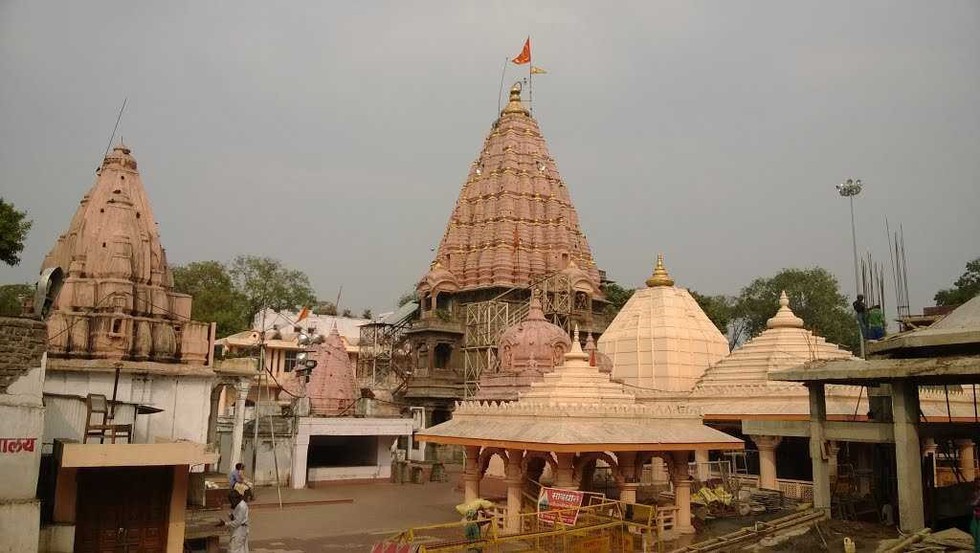
About Mahakaleshwar Temple:
- It is a Hindu temple dedicated to Shiva.
- Location:
- It is located in the ancient city of Ujjain in the state of Madhya Pradesh.
- The temple is situated besides the Rudra Sagar lake.
- It is one of the twelve Jyotirlingams of Lord Shiva.
- Mahakaleshwar idol is Dakshina Mukhi, facing south, unlike all the other Jyotirlingas.
- The temple, which is spread over five levels, sees a huge throng of devotees during the Maha Shivaratri festival.
- Architecture:
- The temple complex comes with a spacious courtyard that is adorned with finest sculptures that are believed to be influenced by Chalukya, Maratha, and Bhumija styles of structural design.
- The foundation and platform are built of stones. Most of the upper structure rests on the strong and well-designed pillars and plasters.
- It is complete with impressive lingam sculptures of Mahakaleshwar.
- The images of Ganesh, Parvati and Karttikeya are installed in the west, north and east of the sanctum sanctorum.
- The temple also houses a tank constructed in the sarvatobhadra style.
What are Jyotirlingas?
- A Jyotirlinga is a shrine where Lord Shiva is worshipped in the form of a Jyotirlingam.
- There are currently 12 main Jyotirlingas in India.
- The 12 Jyotirlinga temples in India take the name of the presiding deity. Each considered a different manifestation of Lord Shiva.
- 12 Jyotirlingas in India are:
- Somnath Jyotirlinga in Gir, Gujarat
- Mallikarjuna Jyotirlinga in Srisailam, Andhra Pradesh
- Mahakaleshwar Jyotirlinga in Ujjain, Madhya Pradesh
- Omkareshwar Jyotirlinga in Khandwa, Madhya Pradesh
- Baidyanath Jyotirlinga in Deoghar, Jharkhand
- Bhimashankar Jyotirlinga in Maharashtra
- Ramanathaswamy Jyotirlinga in Rameshwaram, Tamil Nadu
- Nageshwar Jyotirlinga in Dwarka, Gujarat
- Kashi Vishwanath Jyotirlinga in Varanasi, Uttar Pradesh
- Trimbakeshwar Jyotirlinga in Nasik, Maharashtra
- Kedarnath Jyotirlinga in Rudraprayag, Uttarakhand
- Ghrishneshwar Jyotirlinga in Aurangabad, Maharashtra
Prelims Pointers
May 29, 2023
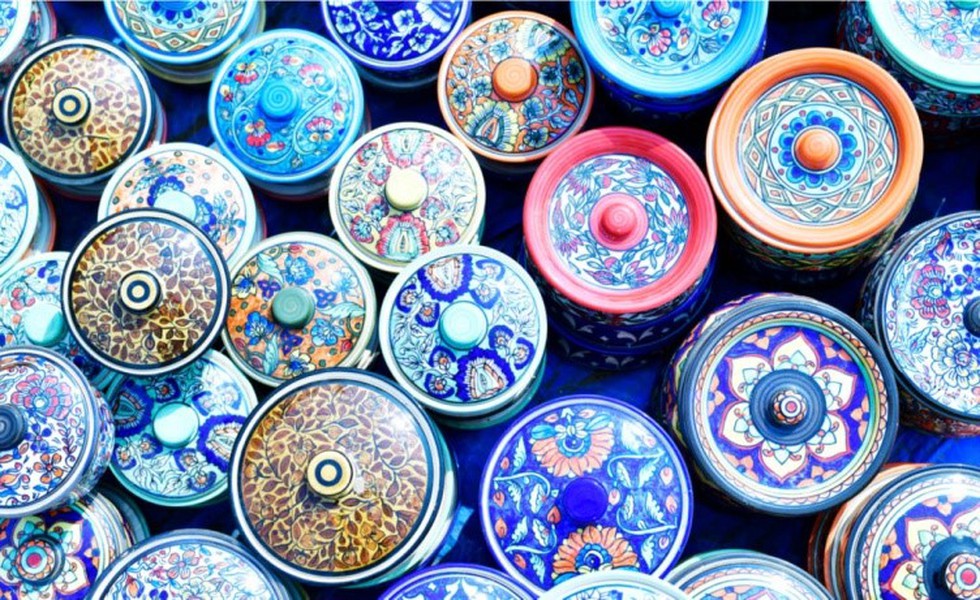
About One District One Product (ODOP) Initiative:
- It was launched by the Ministry of Food Processing Industries in 2018.
- Objective: To help districts reach their full potential, foster economic and socio-cultural growth, and create employment opportunities, especially, in rural areas.
- The initiative aims to select, brand, and promote at least One Product from each District of the country for enabling holistic socioeconomic growth across all regions.
- ODOP Initiative aims to turn every district in India, into an export hub through promotion of the product in which the district specialises.
- The initiative plans to accomplish this by scaling manufacturing, supporting local businesses, finding potential foreign customersand so on, thus helping to achieve the ‘Atmanirbhar Bharat’ vision.
- The ODOP Initiative has identified a total of 1102 products from 761 districts across the country.
- This initiative is carried out with the ‘Districts as Exports Hub’ initiative by the Directorate General of Foreign Trade (DGFT), Department of Commerce.
- Process:
- Under the ODOP initiative, all products have been selected by States/UTs by taking into consideration the existing ecosystem on the ground, products identified under Districts as Export Hubs (DEH), and GI-tagged products.
- The finalized list is communicated to the Department for Promotion of Industry and Internal Trade (DPIIT) by the relevant Department of States/UTs.
- All activities including exhibitions, capacity building, etc. are undertaken at the State/UT and district level, in consultation and coordination with the States/UTs.
Prelims Pointers
May 29, 2023
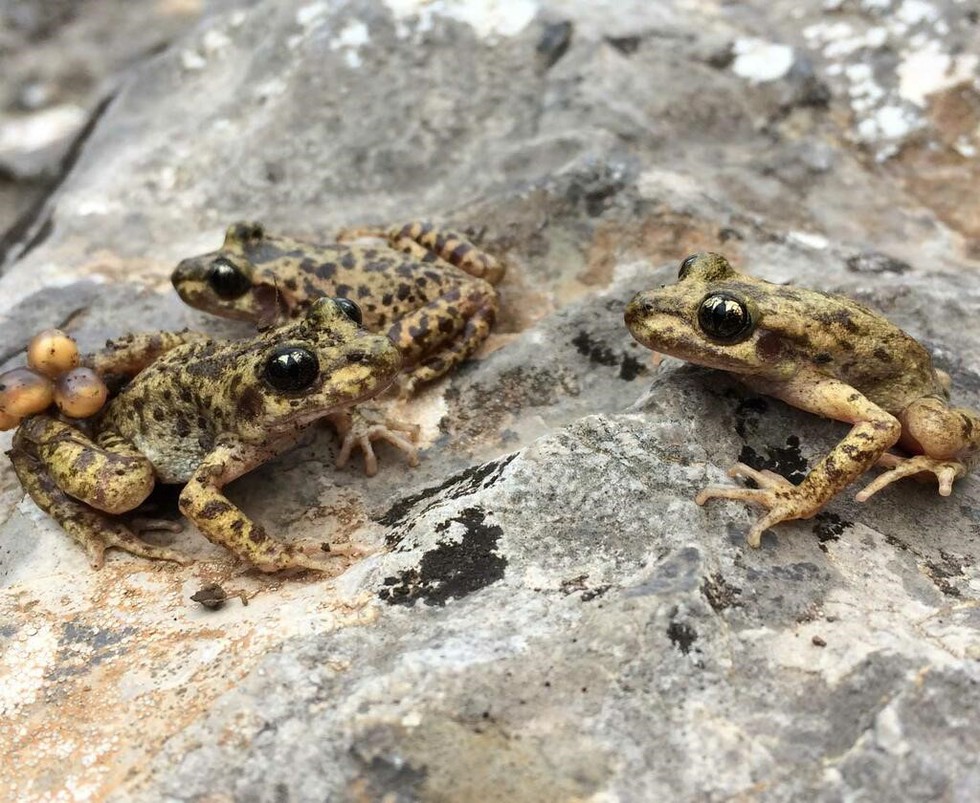
About Chytridiomycosis:
- It is an infectious disease that affects amphibians, especially frogs worldwide.
- It is caused by either of two species of amphibian chytrid fungus. They are called Batrachochytrium dendrobatidis and Batrachochytrium salamandrivorans.
- It is an emerging disease that is significantly impacting amphibian populations across the globe.
- The disease has caused the decline or complete extinction of over 200 species of frogs and other amphibians.
- How chytrid fungus infects the frog?
- Chytrid fungus is a waterborne fungus that disperses into the environment in order to search for a new host.
- The fungus travels through water sources until it finds a new host, and enters through the skin.
- Chytrid infects frogs by reproducing in their skin.
- The single-celled fungus enters a skin cell, multiplies, and then breaks back out onto the surface of the animal.
- This damage to the skin affects the frog’s ability to balance water and salt levels and eventually leads to death if infection levels are high enough.
Prelims Pointers
May 29, 2023
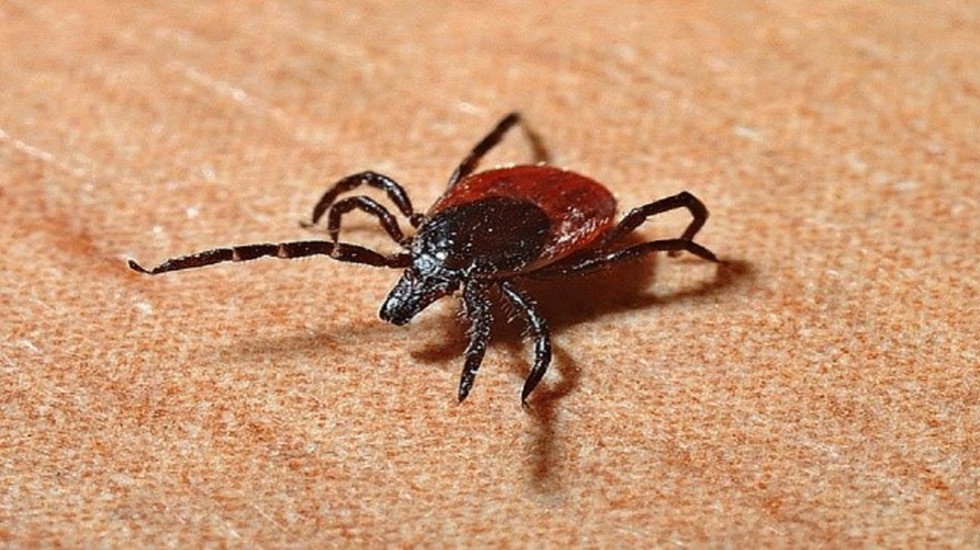
About Powassan Virus Disease:
- It is a rare, yet often serious disease that is spread by the bite of infected ticks.
- The Powassan virus, often called a ticking time bomb, is named after Powassan, Ontario where it was first discovered in 1958.
- How do people get affected?
- Not all ticks carry these viruses and not all people bitten by a tick will get sick.
- A tick needs to be attached to a person for a certain length of time before it can cause disease.
- Symptoms:
- People in the initial days can experience symptoms of fever, headache, vomiting, and weakness.
- The virus can further cause brain infection (encephalitis) or form the membranes around the brain and spinal cord (meningitis).
- In severe cases, patients can suffer from confusion, loss of coordination, difficulty speaking, and seizures.
- Treatment:
- There are no medications to prevent or treat Powassan virus infection.
- Rest, fluids, and over-the-counter pain medications may relieve some symptoms.
Prelims Pointers
May 29, 2023
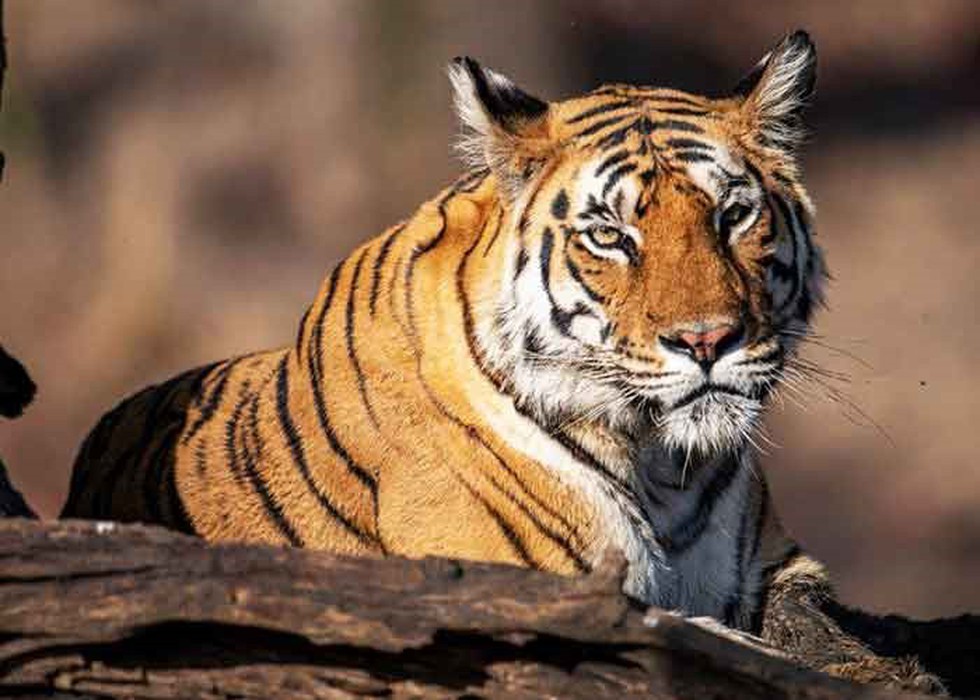
About Amangarh Tiger Reserve:
- Location:
- It is located in Amangarh in Bijnor district in the state of Uttar Pradesh.
- It is situated in the Terai region and covers an area of around 578 sq km.
- It shares its boundaries with Jim Corbett National Park of Uttarakhand.
- It was originally part of the Jim Corbett National Park, and after the state of Uttarakhand was carved out of Uttar Pradesh, Jim Corbett went to Uttarakhandand Amangarh remained in Uttar Pradesh.
- It was declared a tiger reserve in 2012.
- Flora: The vegetation of the tiger reserve is a combination of grasslands, wetlands and dense forest.
- Fauna:
- Mammals: Tiger, Elephant, Swamp Deer, Sambar, Cheetal, Hog Deer, Kakar, Langur, Sloth Bear, Porcupine, Otter.
- Birds: Hornbill, Red Jungle Fowl, Pea Fowl, Bengal Florican, Fishing Eagle, Serpent Eagle, Osprey, Woodpeckers, Shama, Indian Pitta, Paradise Flycatcher, Orioles, Emerald Dove.
- Reptiles: Monitor Lizard, Turtles, Python, Gangetic Dolphin, Mugger, Gharia etc.
Prelims Pointers
May 29, 2023
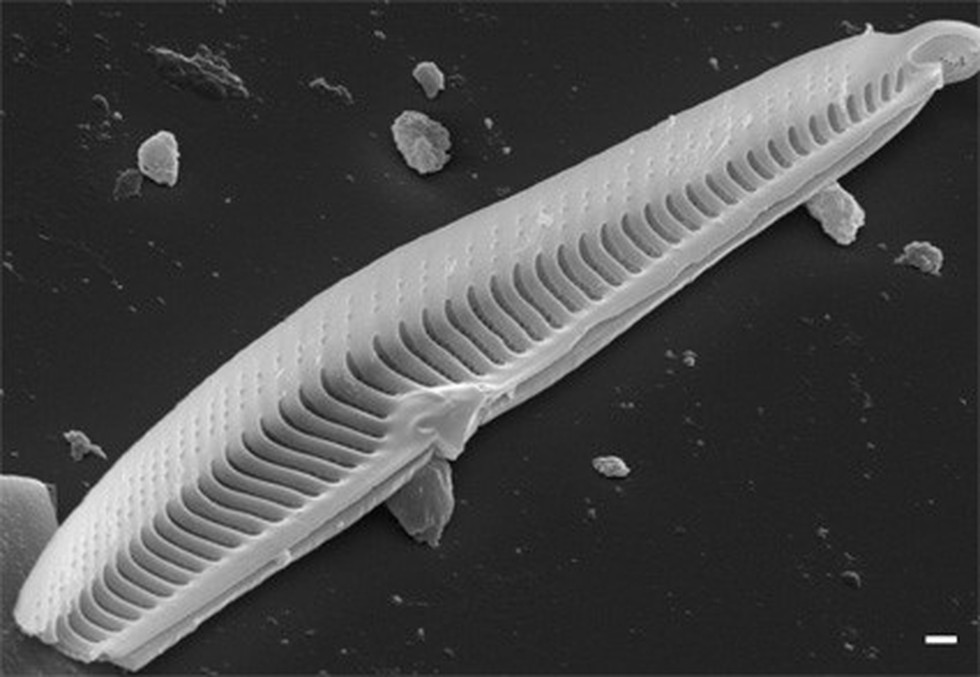
About Gomphonema rajaguruii:
- It is a new freshwater diatom species.
- It was found in a semi-aquatic environment along the wet walls in Maharashtra’s popular hill station, Mahabaleshwar in Satara District.
- It was named after a veteran geo-archaeologist from the city, the late Professor S N Rajaguru.
- It is unique because it shows the characteristics of two genus – Gomphonema and Gomphoneis.
What are Diatoms?
- It is a photosynthetic, single celled organism.
- They are a major group of algae and form one of the most common forms of phytoplankton.
- They are found in almost every aquatic environment including fresh and marine waters.
- Diatoms have cell walls made of silica, Each species has a distinct pattern of tiny holes in the cell wall (frustule) through which they absorb nutrients and get rid of waste.
- Collectively, they are responsible for generating up to 50% of the oxygen produced globally each year.
Prelims Pointers
May 29, 2023
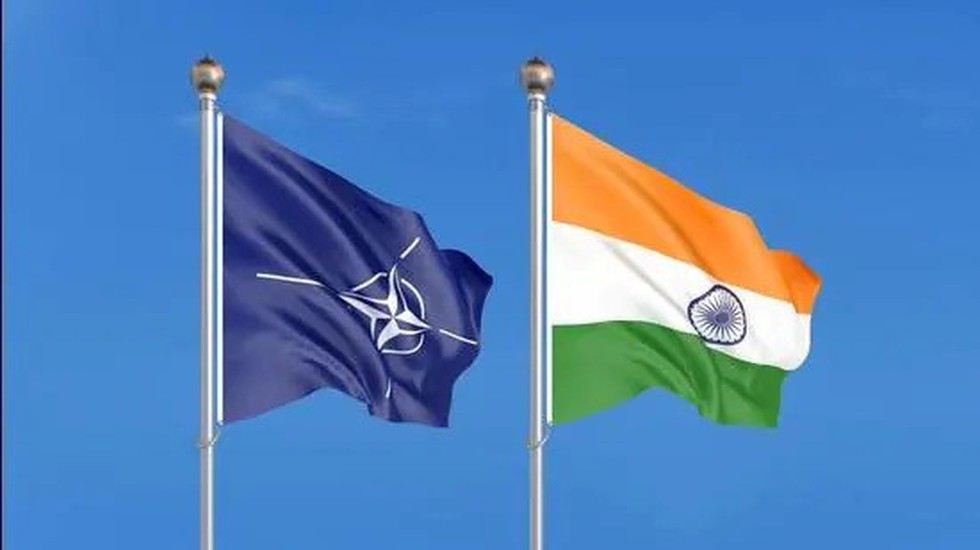
About Nato Plus:
- It is a grouping of the North Atlantic Treaty Organization (NATO) and five countries, including Australia, New Zealand, Japan, Israel, and South Korea.
- The group works toward boosting global defence cooperation.
- Advantages for India by becoming a member of NATO Plus:
- India would gain access to seamless intelligence sharing between these countries.
- India would get access to the latest military technology without much of a time lag.
- It would further strengthen India’s defence partnership with the United States.
What is North Atlantic Treaty Organization (NATO)?
- It is a transatlantic alliance of 31 like-minded North American and European countries.
- It was established by the North Atlantic Treaty (also called the Washington Treaty) on April 4, 1949.
- Aim: To protect peace and to guarantee the territorial integrity, political independence and security of the member states.
- Article Five of the treaty: If an armed attack occurs against one of the member states, it should be considered an attack against all members, and other members shall assist the attacked member, with armed forces if necessary.
- Headquarters: Brussels, Belgium.
May 28, 2023
Prelims Pointers
May 28, 2023
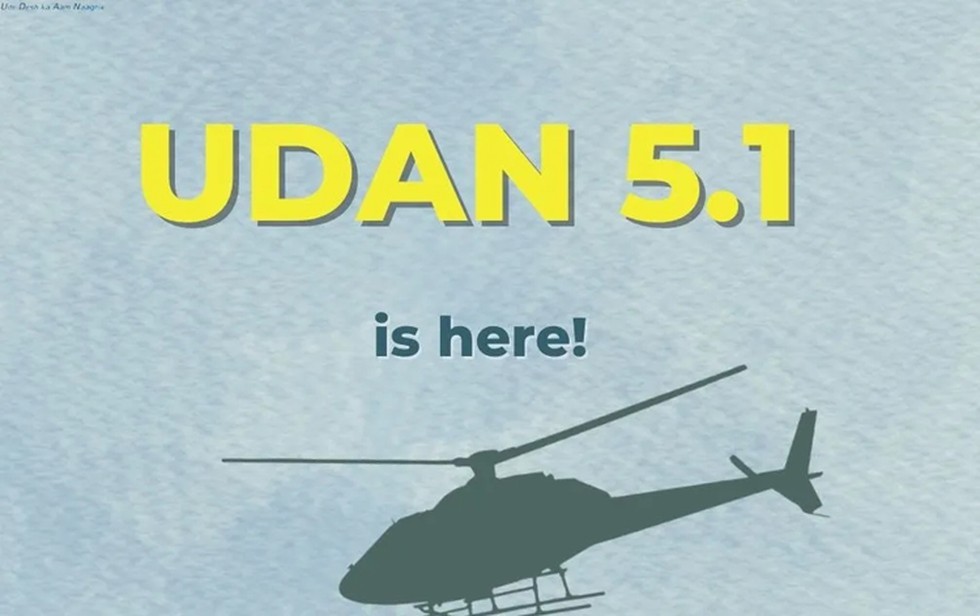
About:
Regional Connectivity Scheme (RCS)-UDAN
- UDAN (UdeDeshkaAamNaagrik) is a regional airport development and "Regional Connectivity Scheme" (RCS) of the Union Government.
- The scheme UDAN envisages providing connectivity to un-served and under-served airports of the country through revival of existing air-strips and airports.
- Implementing Ministry: Ministry of Civil Aviation
- This is first-of-its-kind scheme globally to create economically viable flights on regional routes so that flying becomes affordable to the common man even in small towns.
- It is a key component of the National Civil Aviation Policy (NCAP) which was released by the Ministry of Civil Aviation (India) in 2016.
- The scheme is jointly funded by the central government and state governments.
Two components of UDAN:
- Airports:The first component is to develop new airports and enhance the existing regional airports to increase the number of operational airports for scheduled civilian flights.
- Flight routes:The second component is to add several hundred financially-viable, capped-airfare, new regional flight routes to connect more than 100 under-served and un-served airports in smaller towns by using "Viability Gap Funding" (VGF) where needed.
Prelims Pointers
May 28, 2023
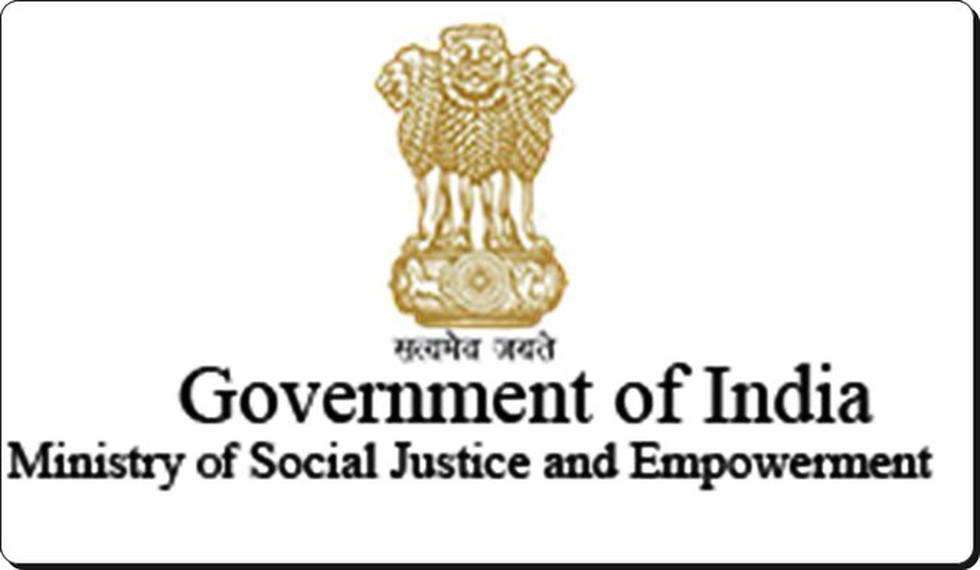
About:
- Two-day national review conference organised by the Department of Social Justice and Empowerment will be conducted in New Delhi recently.
- The Ministry of Social Justice and Empowerment said, the focus of this conference is to discuss the issue pertaining to the welfare schemes being implemented by the department for the marginalized section of the society including Scheduled Castes, Other Backward Classes, Senior Citizens and others.
- The National Review Conference will have deliberation on an overview of the schemes, highlighting best practice and innovations from States and Union Territories to establish better synergy between the States and Centre.
Prelims Pointers
May 28, 2023
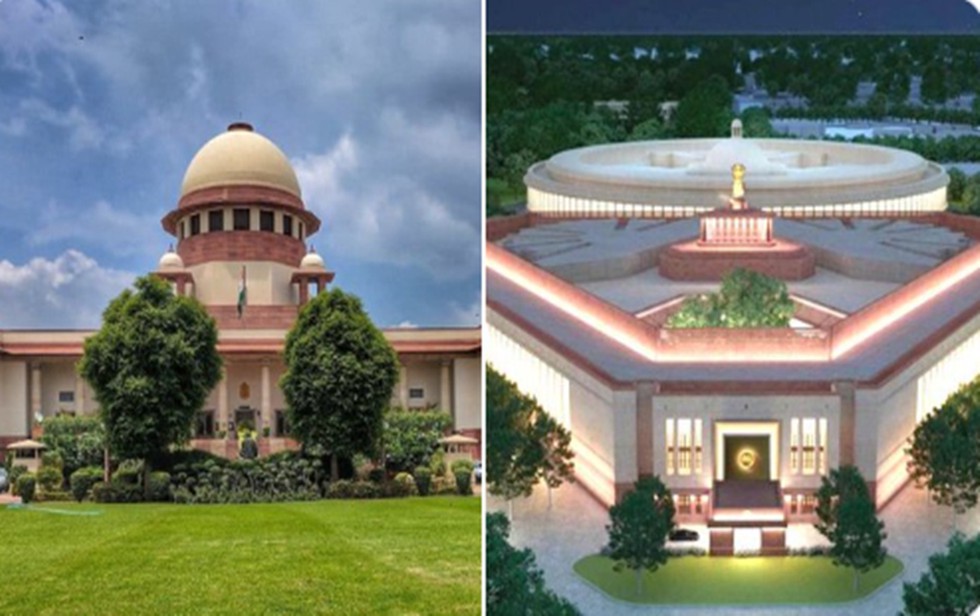
About:
- PIL has not been defined in any Indian statute. However, Courts have interpreted and defined PIL.
- The Hon’ble Supreme Court of India has, in the case of Janata Dal v. H.S.Chaudhary, [(AIR 1993 SC 892) held that lexically, the expression ‘PIL’ means a legal action started in a court of law for the enforcement of public/general interest where the public or a particular class of the public some interest (including pecuniary interest) that affects their legal rights or liabilities.
- Any individual or organisation can file a PIL either in his/her/their own standing i.e. to protect or enforce a right owed to him/her/them by the government or on behalf of a section of society who is disadvantaged or oppressed and is not able to enforce their own rights.
- The concept of “Locus Standi” has been relaxed in the case of PILs so as to enable the Hon’ble Court to look into grievances that are filed on behalf of those who are poor, illiterate, deprived or disabled and are unable to approach the courts themselves.
- Suo moto cognizance may also be taken by the Court.
- PILs are extensions of Writ Jurisdiction. Therefore, PILs may be filed either before the Hon’ble Supreme Court of India under Article 32 of the Indian Constitution or any High Court under Article 226 of the Indian Constitution.
Prelims Pointers
May 28, 2023
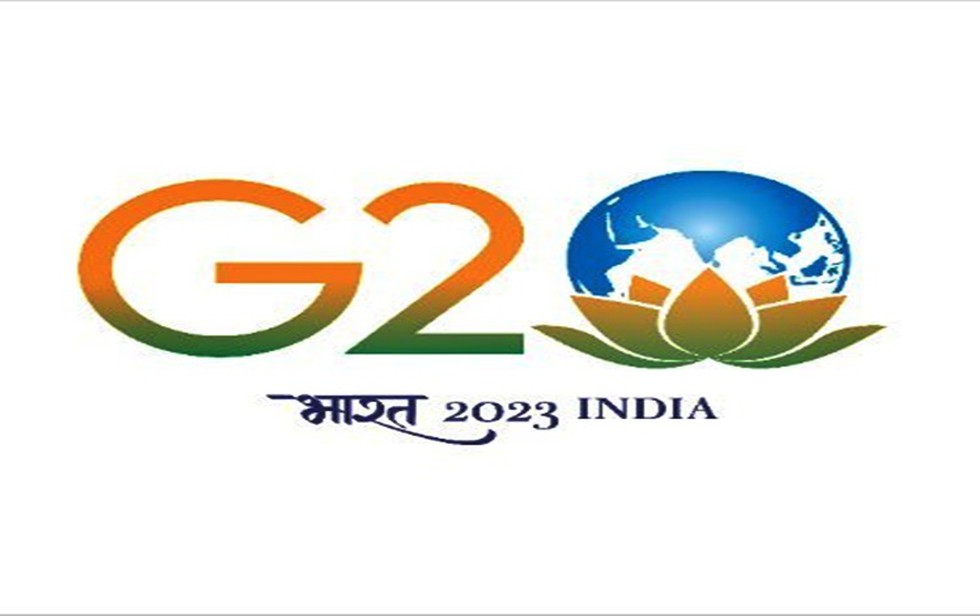
About:
- Its primary goal is to prepare "comprehensive recommendations for consideration by leaders on how the G20 could continue to make practical and valuable contributions to international efforts to combat corruption".
- The ACWG has led the G20 anti-corruption efforts coordinating the collective and national actions taken by its members.
- The ACWG actively works with the World Bank Group, the OECD, the UNODC, the IMF, the FATF, as well as with the Business 20 (B20) and the Civil Society 20 (C20).
Prelims Pointers
May 28, 2023
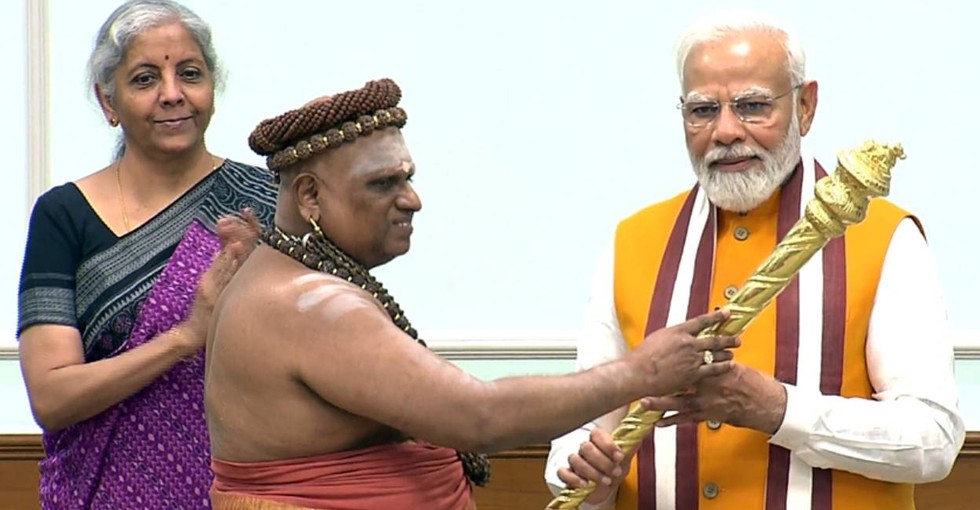
About:
- The Sengol sceptre, measuring an impressive five feet in length, is a remarkable creation made from silver and gold.
- It carries a rich history as it was originally handed over to Pandit Jawaharlal Nehru by Lord Mountbatten on August 14, 1947, symbolizing the momentous transfer of power during India's Independence.
- Subsequently, the sceptre was put on display at The Allahabad Museum, allowing visitors to appreciate its historical significance.
- The golden scepter has its origins in the Chola empire, where it was used as a symbol of power transfer from one king to another.
- It had a carving of the Nandi atop it, which is said to be a symbol of justice.
Prelims Pointers
May 28, 2023
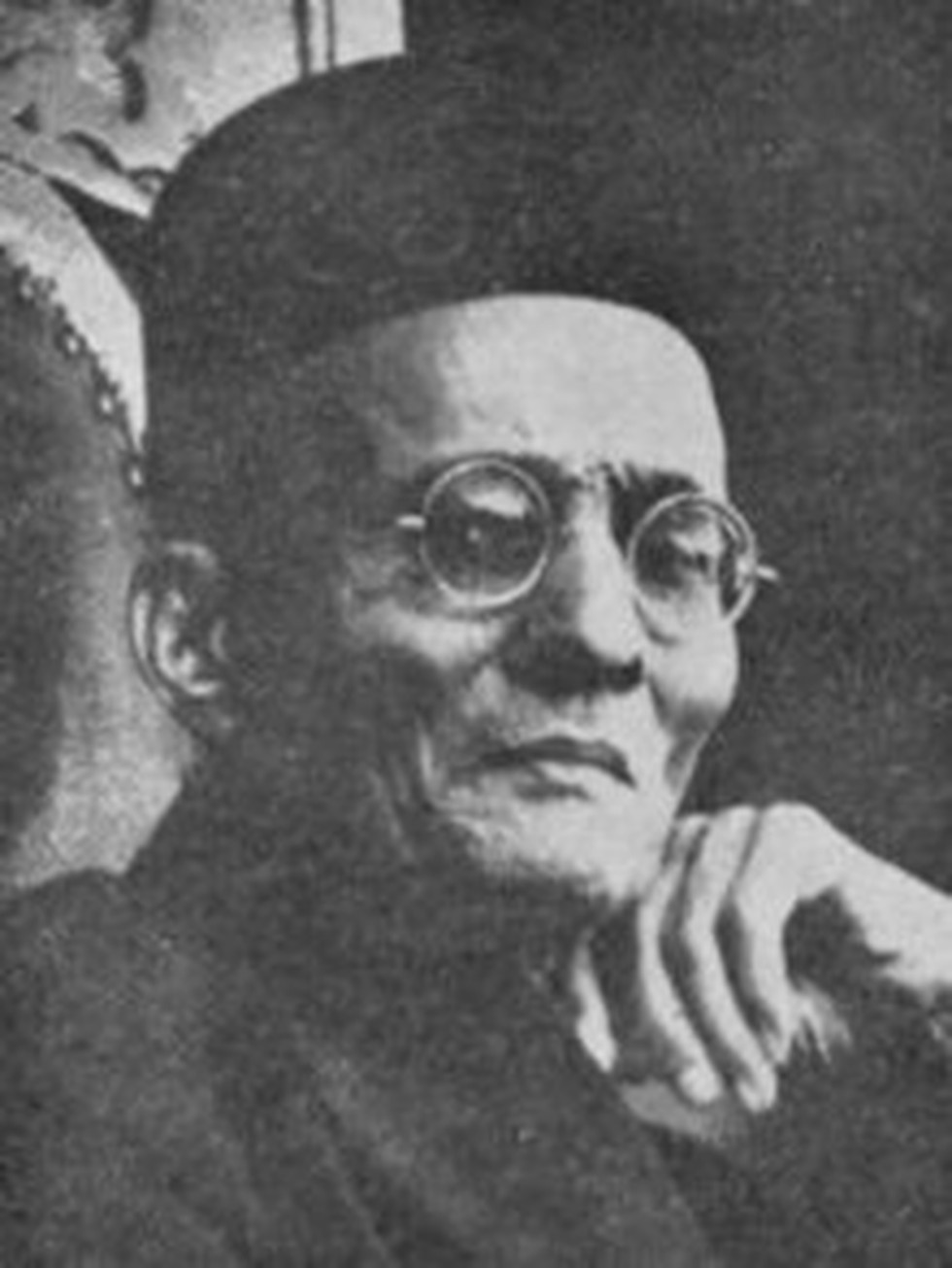
About:
- Born on this day in 1883 near Nasik in Maharashtra, Vinayak Damodar Savarkar was popularly called Veer Savarkar.
- Veer Savarkar was a freedom fighter . He called 1857 revolt as the first war of independence.
- He founded the following Organizations: Abhinav Bharat Society and Free India Society.
- He was also a member of India House. He was not the founder of Hindu Mahasabha, but he did served as its president.
- He opposed the Quit India struggle in 1942, calling it a "Quit India but keep your army" movement.
- Savarkar endorsed the ideal of India as a Hindu Rashtra and is credited with developing the Hindu nationalist political ideology Hindutva.
- Publications:
- He wrote the book ”Joseph Mazzini- Biography and Politics”.
- He published “The Indian War of Independence” about the Indian rebellion of 1857.
- The airport at Port Blair, Andaman and Nicobar's capital has been named Veer Savarkar International Airport.
Prelims Pointers
May 28, 2023
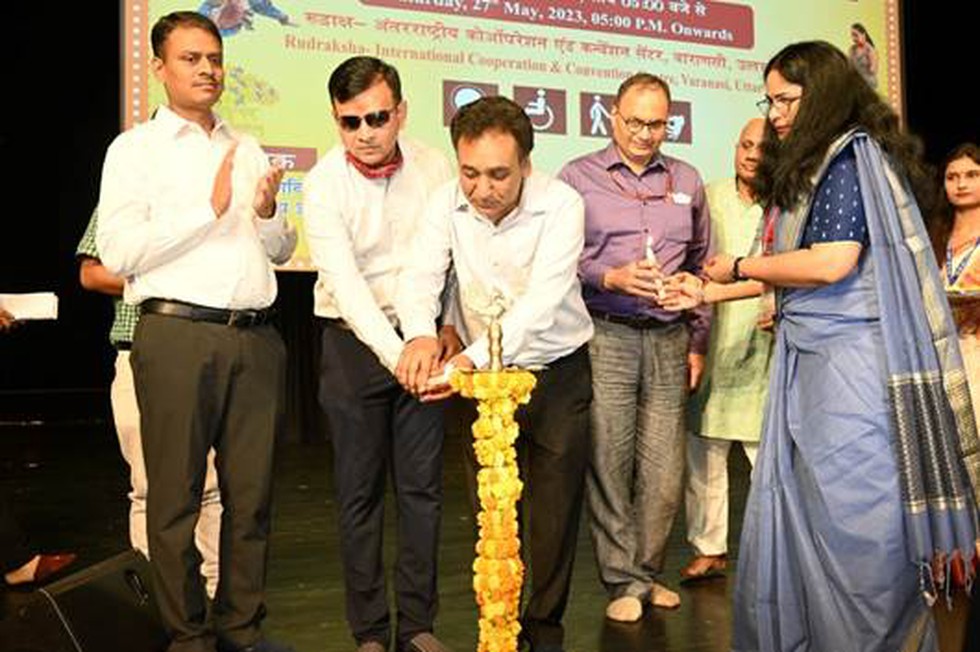
About:
- This time, the sixth DIVYA KALA SHAKTI program was organized in the divine city of Varanasi, where approximately 100 artists from six states, namely West Bengal, Odisha, Jharkhand, Bihar, Uttar Pradesh, and Uttarakhand, performed in the program.
- It is organized by the Department of Empowerment of Persons with Disabilities (Divyangjan), Ministry of Social Justice and Empowerment through CRC-Lucknow, an organization under the department.
- The Department is taking Divya Kala Shakti to regional levels under the direction of former President Shri. Ram Nath Kovind.
- As per this direction, five regional “Divya Kala Shakti” programs have already been held in various places, including the Western Region, North Eastern and Southern Region in Mumbai, Arunachal, Chennai, New Delhi, and Gauhati.
Prelims Pointers
May 28, 2023
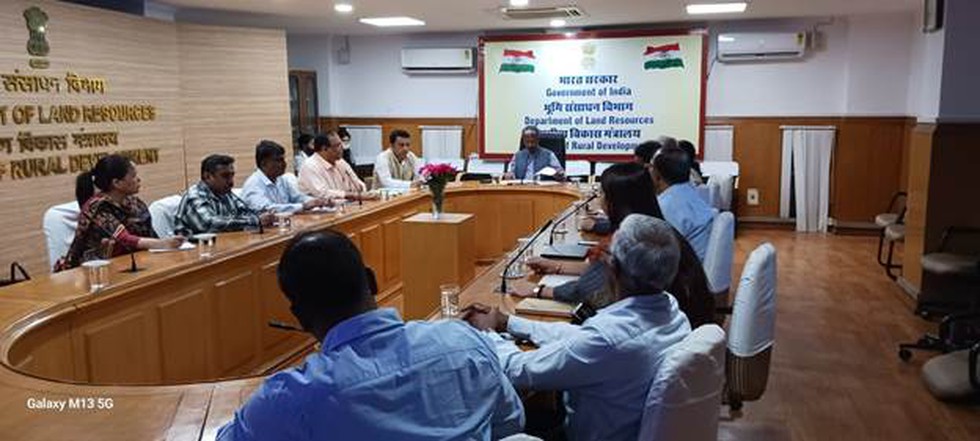
About:
- REWARD is a World Bank assisted Watershed development program which is being implemented from 2021 to 2026.
- The Development Objectives of REWARD program is to “Strengthen capacities of National and State institutions to adopt improved watershed management for increasing farmers resilience and support value chains in selected watersheds of participating States”.
- The program is being implemented to introduce modern watershed practices in the Department of Land Resources in the Ministry of Rural Development and in the States of Karnataka and Odisha.
- The total budget outlay of REWARD program is USD 167.71 million over a program period of 4.5 years.
- At the central level, the scope of the REWARD program covers management, monitoring, communication and knowledge sharing functions by DoLR.
- At the State level, the REWARD program will be contiguous in scope to the WDC-PMKSY 2.0, and support implementation of key science-based activities and demonstrations which eventually aims at synergising broader perspective of WDC-PMKSY 2.0 in other States in India.
Prelims Pointers
May 28, 2023
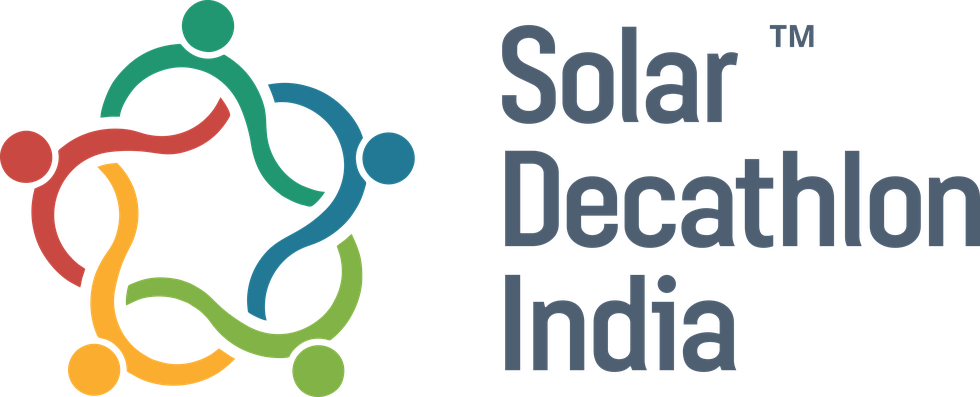
About:
- The Solar Decathlon India is conducted every year by the Indian Institute for Human Settlements (IIHS) and the Alliance for an Energy-Efficient Economy (AEEE).
- It is under the aegis of the Indo-US Science and Technology Forum (IUSSTF), an autonomous bilateral organisation jointly funded by both the Governments (The Department of Science & Technology, Government of India and the U.S. Department of State are the respective nodal departments on the two sides).
- The Council of Architecture (CoA) has signed a Memorandum of Understanding as a knowledge partner with AEEE, who co-organises SDI, to expand outreach and the impact of Solar Decathlon India aimed at building the next generation of leaders to combat climate change in India.
Prelims Pointers
May 28, 2023
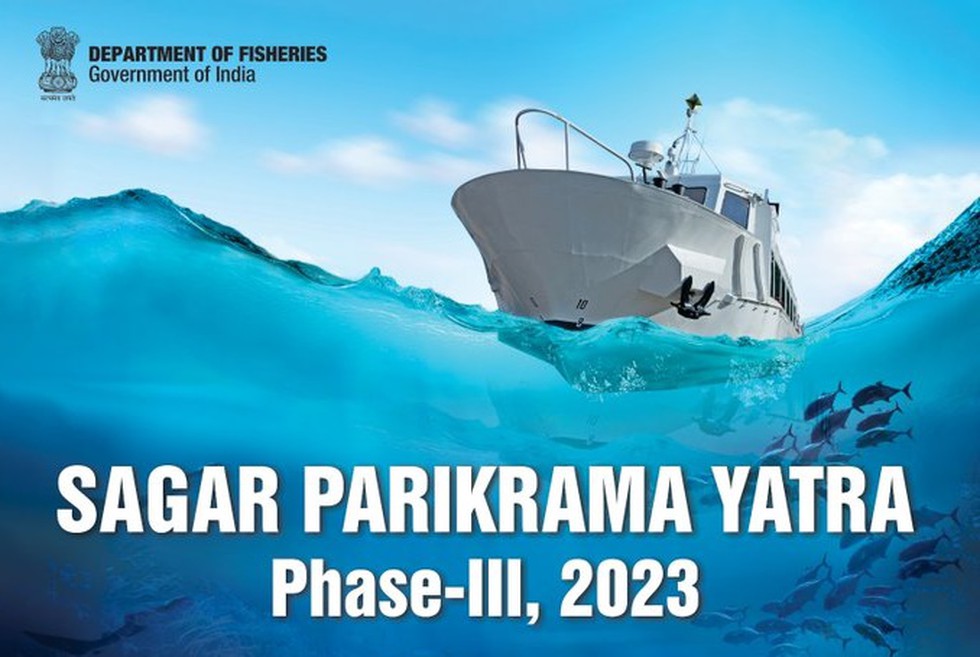
About:
- Sagar Parikrama is an initiative taken by Government of India.
- The aim is to resolve the issues of the fishers, other stakeholders and facilitate their economic upliftment through various fisheries schemes and programs being implemented by the Government of India such as Pradhan Mantri Matsya Sampada Yojana (PMMSY) and Kisan Credit Card (KCC).
- Sagar Parikrama is a program reflecting the far-reaching policy strategy of the government leading to the direct interaction with fishers and fish farmers to understand the issues of coastal areas and problems related to fishermen.
- Phases I, II & III, IV have brought massive changes in the development strategy for fishermen.

